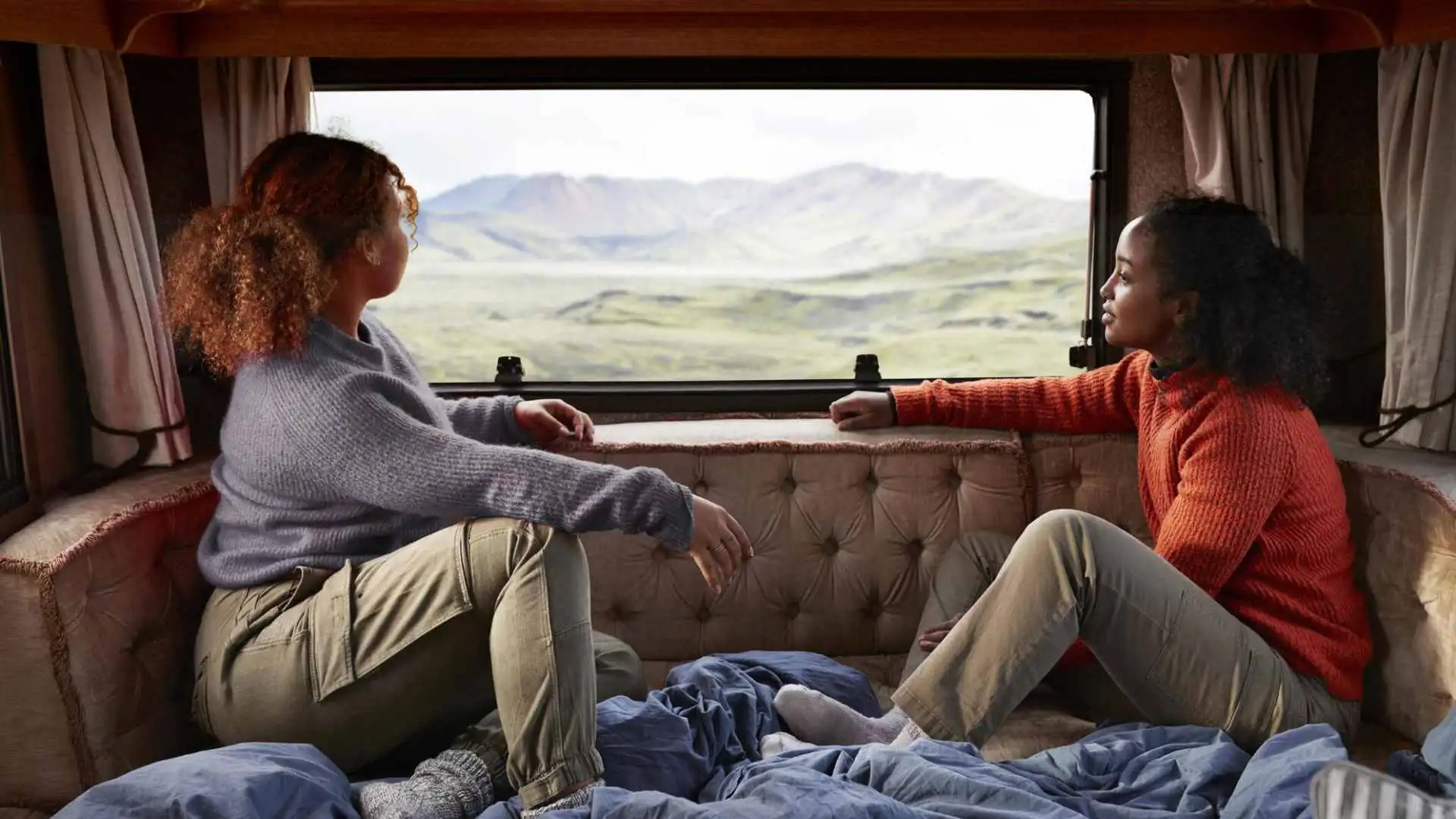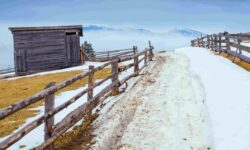The virus keeps spreading. You can’t hide from it ( See our latest findings about what virus hunters are doing in 2024). There are coughs and sneezes all over the place. Is it just a cold or something much worse? It’s hard to say which is more dangerous: the virus or the crowds of scared people rummaging through every store for goods. And then there’s the news. Whenever you turn on your TV, all you see is bad news after bad news. The virus is out of control, the market is crashing, and no one in charge seems to be doing anything right. Sometimes you wish you could just escape it all. Wish you could just get away completely off the grid. Then it dawns on you: maybe you can. This story fits in. With our writing about living off the grid, we’re going to give you that visual imagination that getting away from everything is something we all want right now.
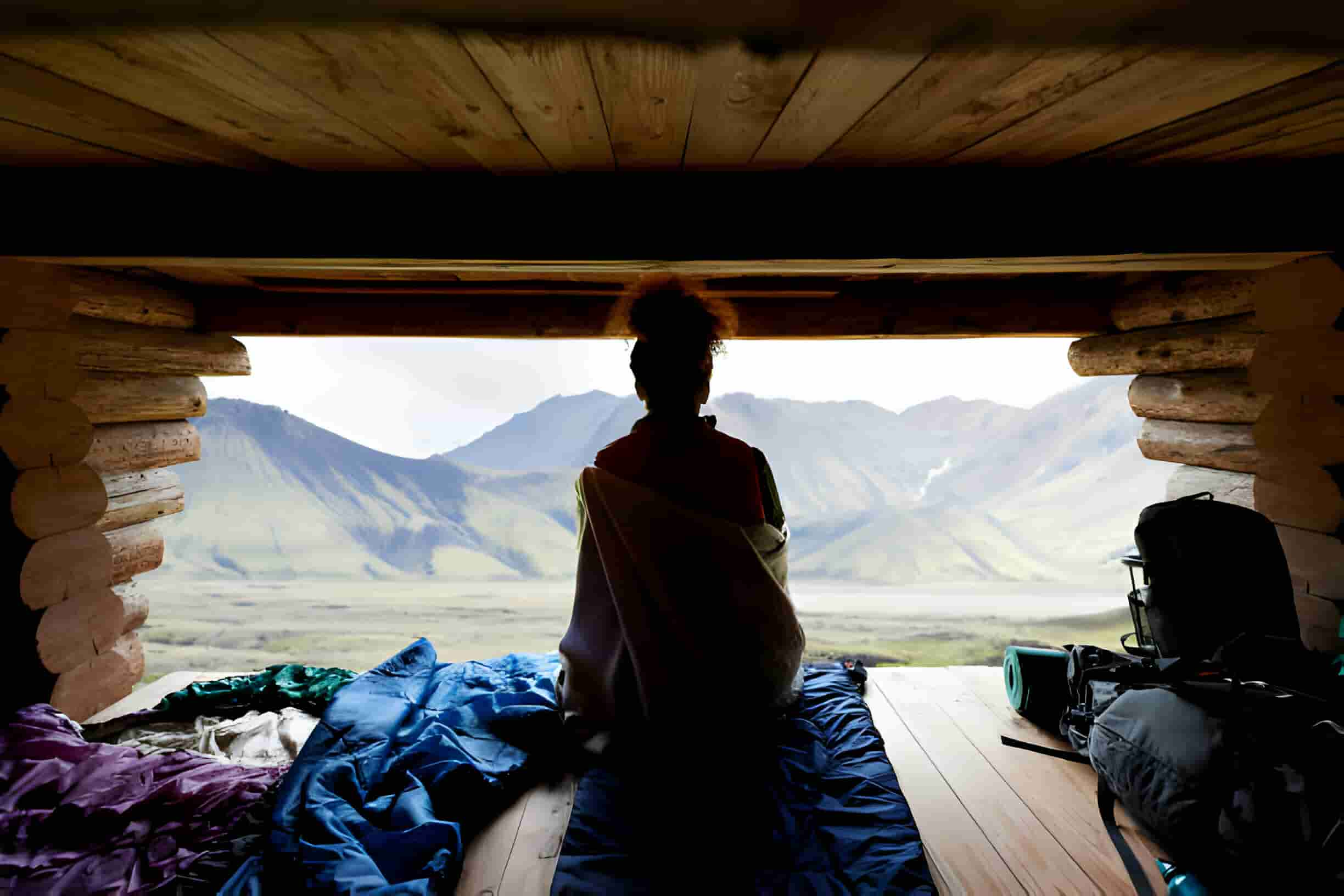
You like to escape from chaos. Isnt it? If yes then let’s shortly understand what it means to live off the grid. In recent years, the idea of not relying on other people’s energy has caught fire. A lot of people are into the idea of being self-sufficient and embracing a more primitive lifestyle. The only problem is that many don’t even know what it means to live off-grid. In this article, we’re going to explain what it means to go off-grid, debunk some myths in the process, and discuss all sorts of ways people get their electricity, run water, manage waste, and stay connected to WiFi while living without using public utilities.
The Oxford English Dictionary says that “off-grid” just means “not using or depending on public utilities, especially the supply of electricity.” Webster’s Dictionary says it even more simply: “not connected or served by utilities like water, gas, or electricity that are run by the government or privately.” To put it simply, it means that your home is not connected to any main grids. If you want to live off-grid, you don’t have to go without power. In many cases, alternative methods are used to generate electricity. Some people use gas, propane, or diesel generators to make up for the lost grid connection. Solar panels with batteries and inverters are another great option.
Wind turbines and small water turbines can also be implemented here. Living off-grid doesn’t mean one has to disconnect from the whole world either. Even if you don’t have traditional internet connections like cable, off-grid individuals can still browse the web in different ways. If phone service is accessible on the property, a personal hotspot can be created through a smartphone. They were giving you access to any Wi-Fi-enabled device that’s in range of your smartphone hotspot. If phone service is spotty at best, a signal booster can be used to strengthen any incoming connections through this method. And finally, we have satellite internet, which is the most expensive solution but an excellent one nonetheless because it gives anyone access to everything they had before going off-grid.
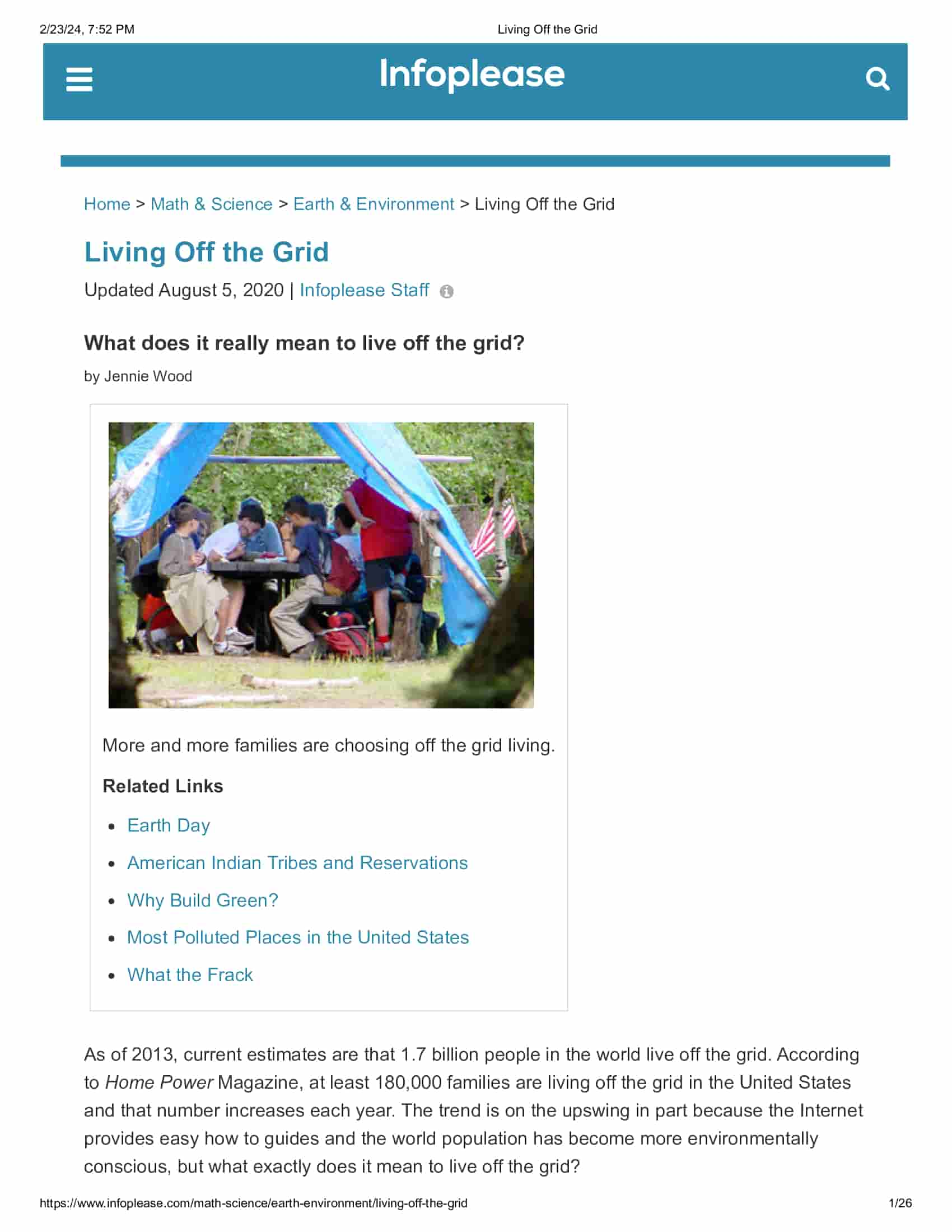
As stated by Info Please, it was found that as of 2013, around 1.7 billion people live without using the main power grid. In the context of that year’s global population, this number is huge. However, don’t forget that “living off the grid” refers to many different living styles and situations. This can range from having no access to any utilities to choosing not to pay for utility services for a variety of reasons such as environmental or personal ones.
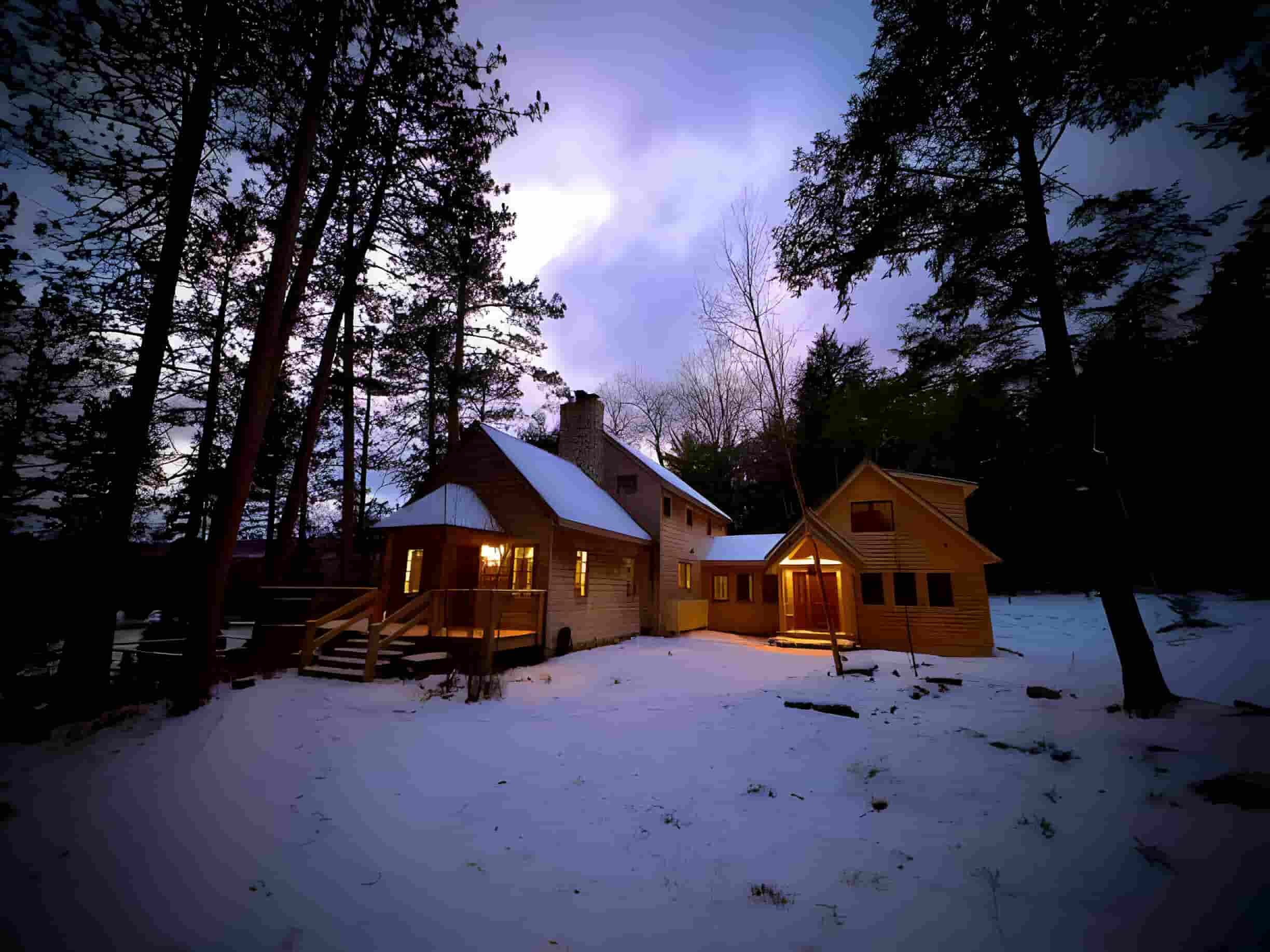
Have you thought about where people like to live off the grid?
We will review the 20 best states in the U.S.A. for living off the grid. Let’s check,
- New Mexico – New Mexico, The Land of Enchantment. There is a lot of space and sunshine here for people who want to live off the grid. New Mexico gets the second-most sun out of all US states, so it’s great if you want to generate power using solar panels. It also has low costs of living and land prices, which makes moving here easier— and better for you and the Earth. Since many New Mexico areas are either underdeveloped or far apart from each other, there are many off-grid communities spread throughout the state. One example is the Greater World Community: a bunch of eco-friendly homes built with recycled materials.
- Oregon – A big state full of eco-friendly people and lots of land. So it’s only natural that there are numerous off-grid communities throughout the Pacific Northwest. Many residents even live alone in the middle of nowhere without electricity or water. How, though? Generators and sun cells are what they use. The state even gives out money to incentivize everyone to go green. So don’t be surprised when you see someone’s house made out of mud on your next road trip.
- Missouri – Missouri is famous for its off-grid living movement. You can thank the state’s rolling plains landscape for that, it makes agriculture and farming a breeze for off-gridders. Missouri’s open rural landscapes and easy zoning laws make it simple to transform your land into an off-the-grid haven. Also, building codes and homeschooling regulations are pretty relaxed here too. Missouri has great harvest seasons and mild winters, perfect for self-sustained living. The biggest off-grid community, Dancing Rabbit Ecovillage, also calls Missouri home.
- Texas – People say that everything is bigger in Texas. Including the potential for off-grid living. The Lone Star State values personal and property freedom more than other states, and many counties have minimal building code regulations, allowing for personal construction of all kinds. With such a vast amount of open land in Texas, there’s plenty of room to build and sustain a life on your terms.
- Tennessee – Characterized by its diverse landscape of mountains and rolling hills, Tennessee is a great place to live off the grid. And between you and me, it’s not hard at all. With loose regulations across the state, it wouldn’t take much for you to settle right in. And here’s another advantage if you’re thinking about building a well… water that falls on your property is yours for the taking. By law Tennessee follows Riparian Rights which means any water that falls on your property can be used for beneficial purposes. Between these geographical benefits and a moderate climate with distinct seasons all year round, farming, and gardening can be done pretty much anytime you want.
- Hawaii – Hawaii is very much a place to live off the grid. Its island isolation is just half of the reason why. The state has no restrictions on rainwater harvesting, so you will never run dry on your vodka cranberries. Its tropical climate also provides it with an incredibly high potential for solar and wind power. The main downside to Hawaii is its soaring cost of living, but it does somewhat make up for it in property taxes. And we can’t forget about how pretty these islands are either.
- Pennsylvania – Pennsylvania is a strange state for off-grid living. There are all sorts of restrictive zoning and building permit rules in certain areas. But it’s also the home to the Amish, who are known for their off-grid lifestyle, and the state has regulations to protect that. Aside from that, Pennsylvania is a beautiful place. Rugged landscapes, hills, rivers, and streams make it appealing to nature lovers.
- Wyoming – Wyoming, the least populous state in America, offers an abundance of real estate for off-gridders. Its verdant plains make for great farmland. The low number of regulations makes it a top choice for anyone looking to live off the grid. The government even gives refunds or rebates to homeowners who install solar panels or small wind energy systems. Dreamily open and affordable land is what anyone would want and you can find that in Wyoming.
- Alaska – When one thinks of living off the grid, Alaska frequently comes to mind. It’s our Last Frontier and epitomizes the Wild West spirit of self-sustainability. The state has relaxed regulations that allow for many different types of off-grid living arrangements. And its breathtaking beauty and unique environment make it an enticing destination for ambitious off-gridders. But Alaska’s extreme climate and seasons mean that if you want to live off the grid through winter here, careful planning is required.
- Alabama – You might be surprised to learn that Alabama is the most popular state for living off-grid. Alabama has cheap land compared to other states, and the state is built around personal and property freedom so you can easily establish an off-the-grid life. With a moderate landscape, forests, waterways, and resources abound as well. There are no restrictions on rainfall harvesting and the state gets a decent amount of sunshine for solar energy too. The fact that people live in many places makes it even better.
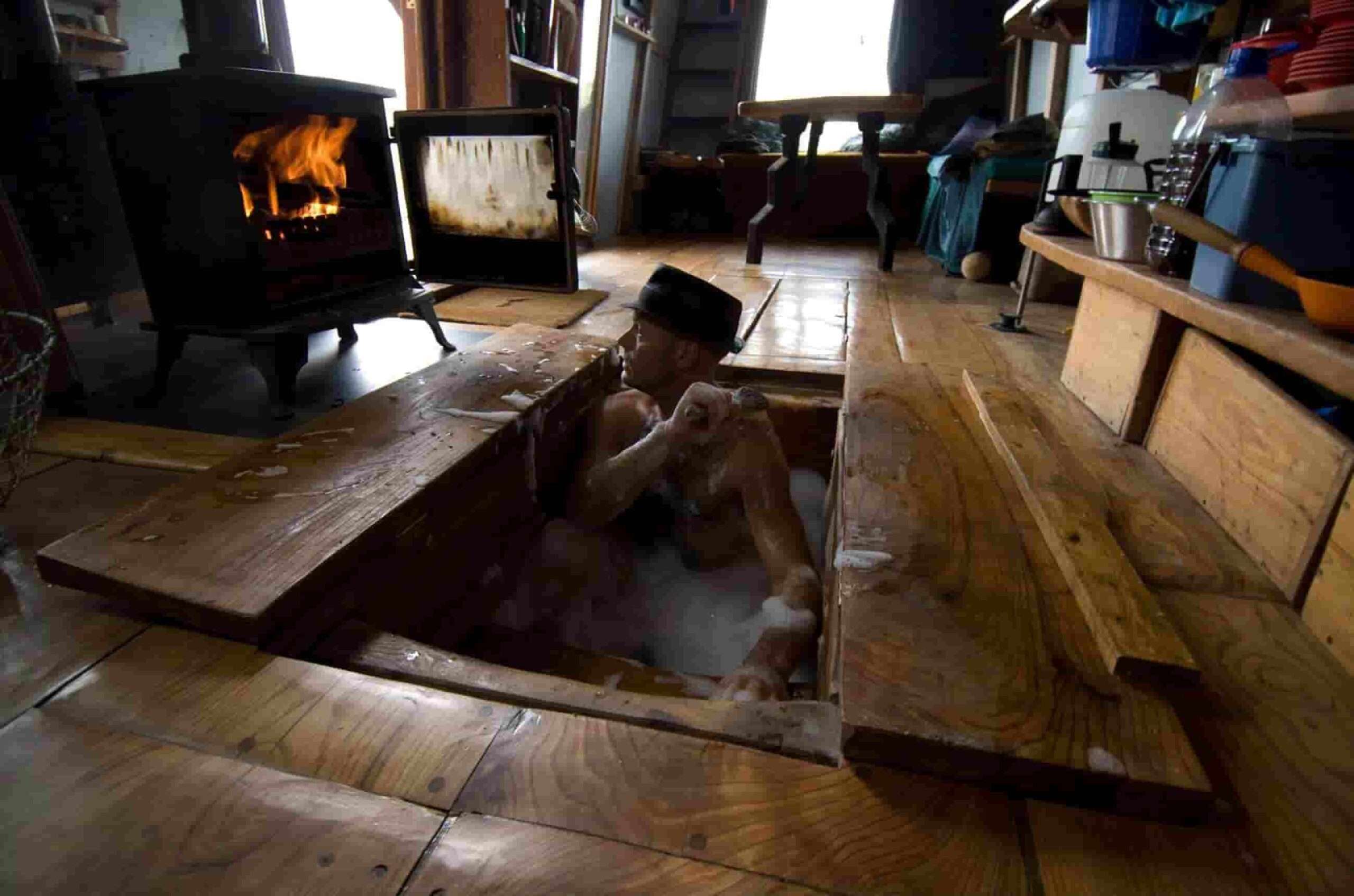
Just a reminder, the remaining 10 states review will be given the last part of this writing area.
Is living on the grid helpful for your mind?
Yes, and the talk with the therapist helps us come up with seven options. The revealed benefits are,
- Skill Development
- Improved Diet and Physical Health
- Reduced Stress and Anxiety
- Connection with Nature
- Sense of Freedom and Empowerment
- Social Interaction
- Meaningful Work
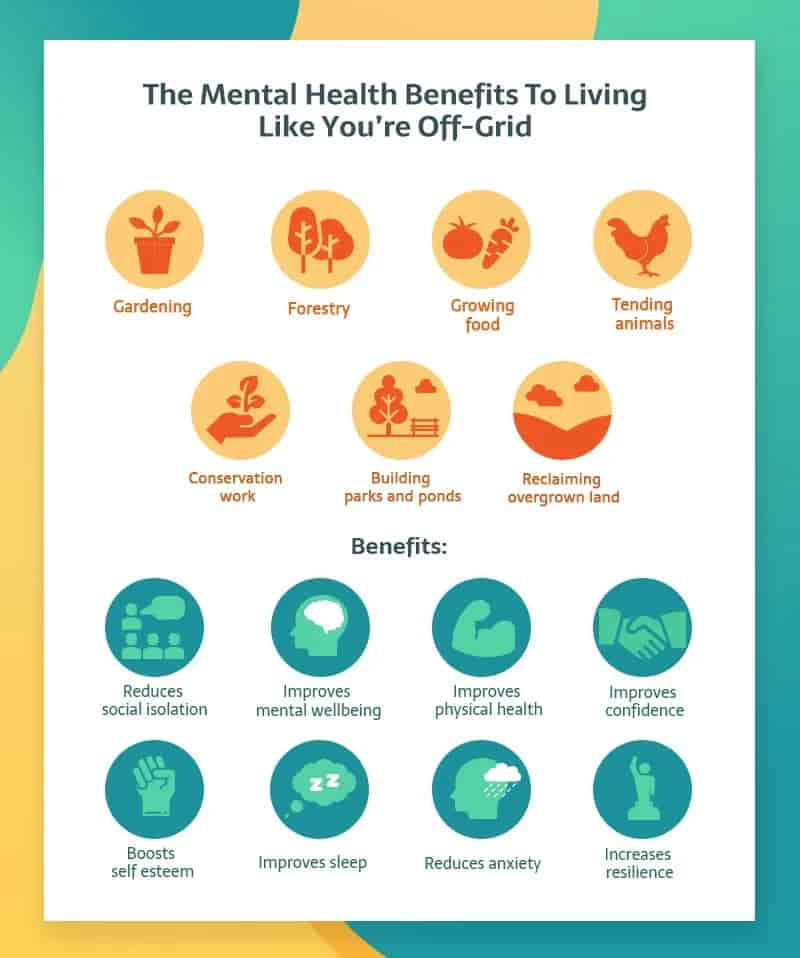
We will know about each and every equipment cost to go off the grid
Living off the grid can be a tough challenge. You have to be self-sufficient and resourceful. In other words, you need to rely on different things rather than what’s accessible through electricity. In most places, they’d recommend certain pieces of equipment just to make money. That’s their priority. They will only give you things that they know people will buy from them. We don’t want to sell you anything, though. These twenty-one things could help you start living without power or water. You might need these if you want to know how much it costs to live without power.
- The San Angelo Bar – This steel bar is six feet long and can be used for many things. It can lever out large boulders, dig out fence posts, or even break apart half-rotted stumps. This tool will last you a lifetime.
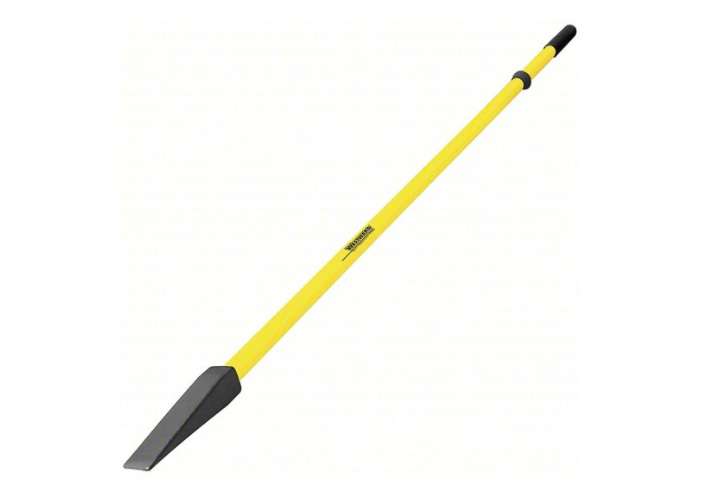
- A Scythe – A scythe is a graceful and efficient tool for maintaining meadows and making your hay. In the hands of an experienced user, a scythe can cleanly slice through tall grass faster than a lawn mower.
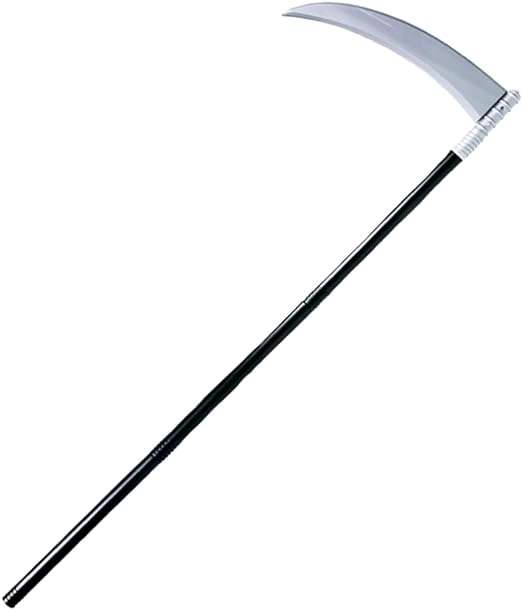
- A Five-Gallon Bucket – Perhaps no tool on the homestead is as versatile as the humble five-gallon bucket. They can supply water to animals, hold dry goods, make composting toilets, and serve as instant nesting boxes. So whether you buy new food-grade buckets or salvage old ones from restaurants or home improvement stores like I do, you can never have too many of them.

- A Splitting Mall – When it comes to turning rounds into firewood, there’s no better tool than a splitting mall. Don’t get it confused with an axe though, cause the splitting mall is more like a heavy-headed wedge that uses its leverage to rip wood apart. So find yourself a high-quality one, and pass it down to your grandkids.
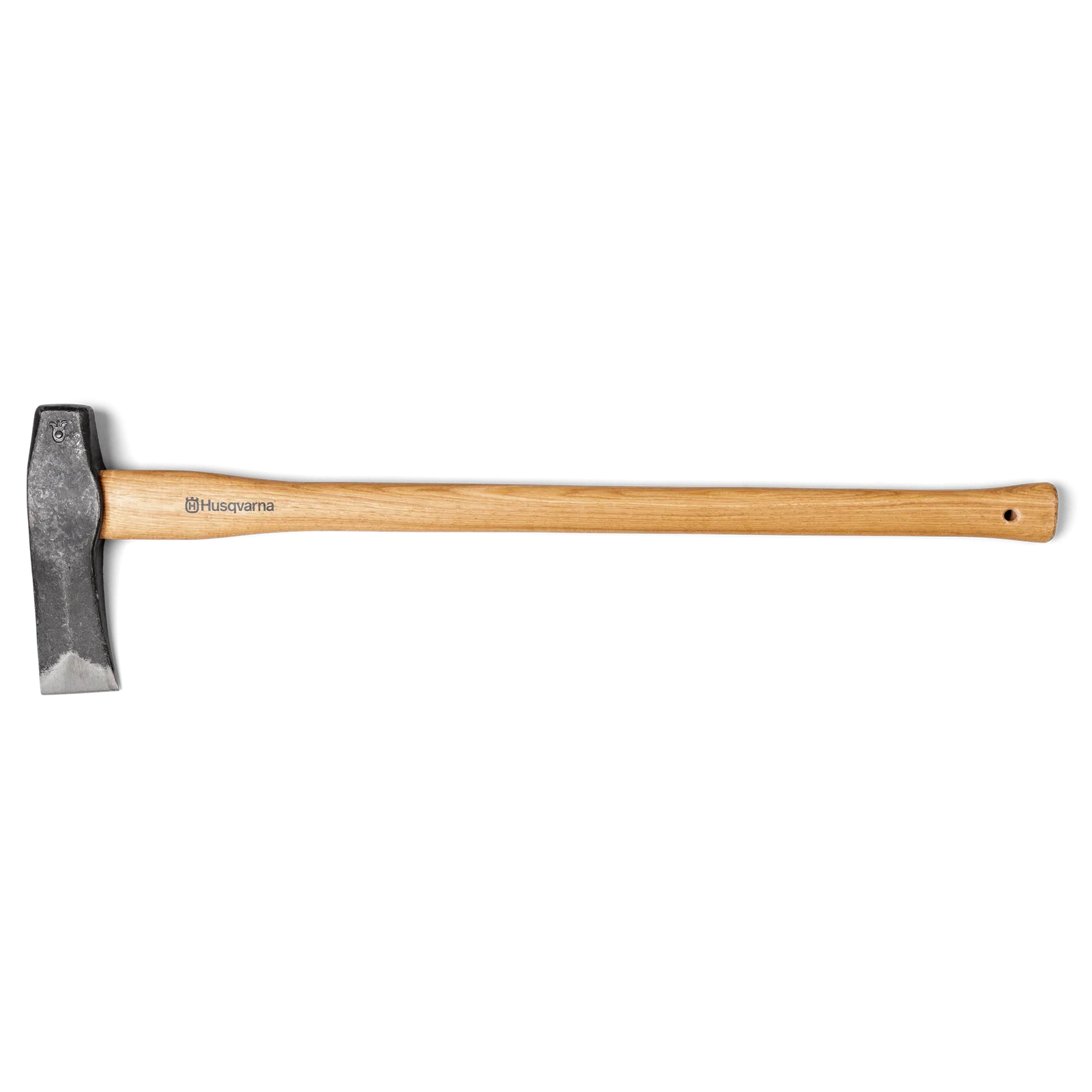
- An Axe – An axe is an all-purpose tool that can be used for felling trees, trimming branches, and even shaping wood for various purposes. This tool can be used for a lot of different things, so any off-grid farm needs to have it.
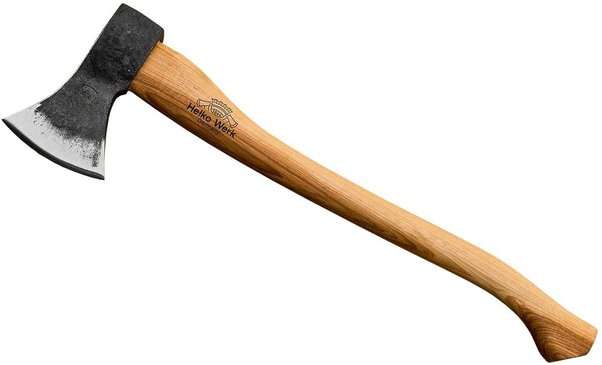
- A Chainsaw – While technically not an off-grid tool, a chainsaw is still an important tool for many homesteaders. It can be used for managing a woodlot and cutting firewood.

- A Manual Pump – Water. Of course, many of us don’t appreciate how important it is to our lives. What do you do when you have enough water, though? Well, easy: you pump some of that sucker out of the ground. But what if there’s no electricity? What do you do then? You install a manual pump. Not only is it easy as heck to set up, but it also ensures you’ll always have drinking water whenever you need it.
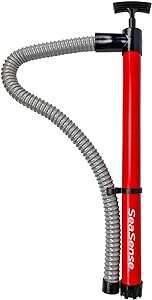
- A Wood Stove – A wood stove not only provides a source of heat but also serves as a versatile tool for cooking and even drying clothes. The act of building a fire and the cozy warmth it provides cannot be replicated by artificial heat sources.
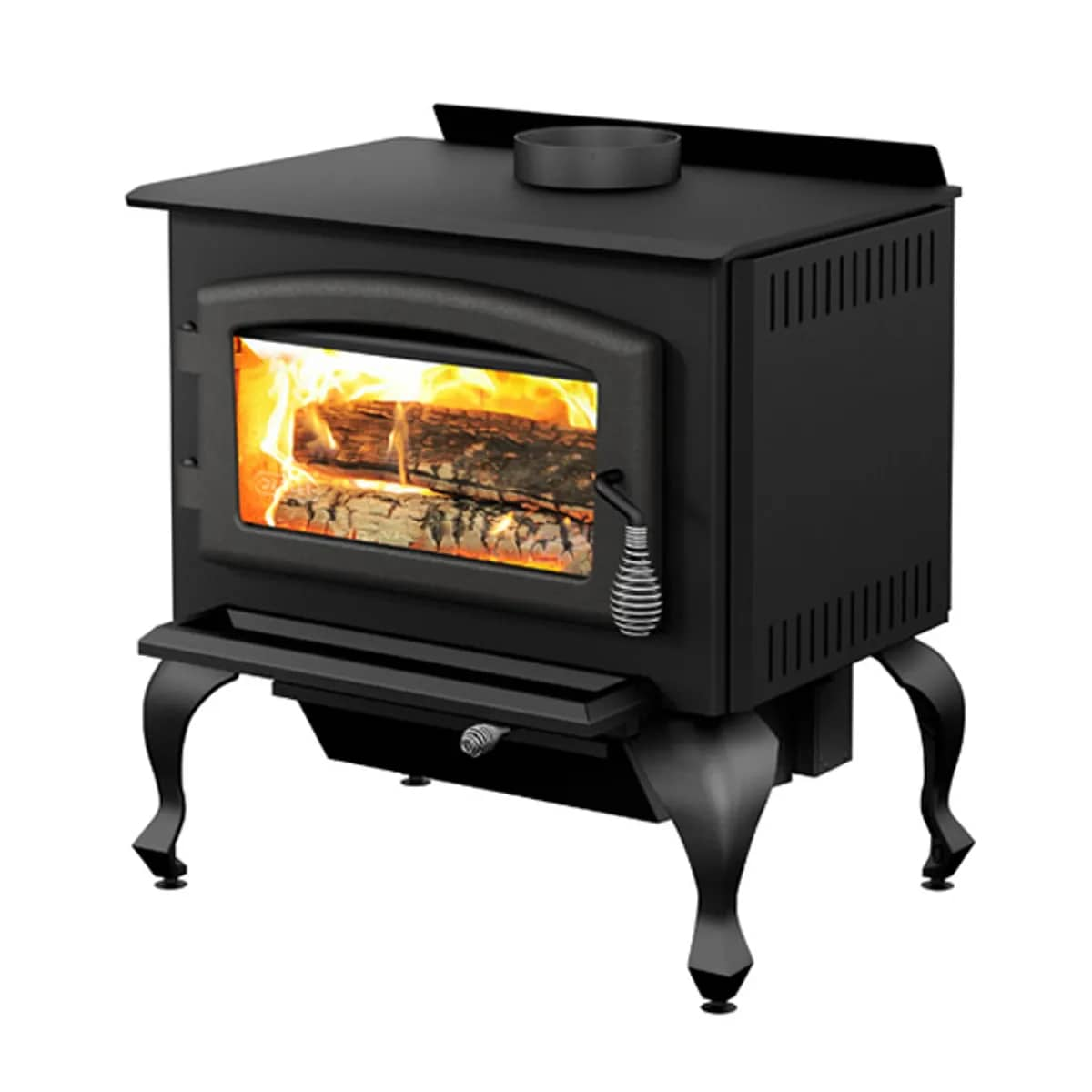
- A Grain Mill – Whole grains have incredible keeping power, but they must be ground into flour to be used effectively. A grain mill allows you to grind fresh flour from wheat berries, rye grain, and whole barley. Look for a high-quality mill that can handle daily use and preserve the nutritive value of the grains.

- A Hay Fork – A hay fork may seem like a forgotten tool, but its lightweight design makes it essential for moving straw and hay on a daily basis. Whether you are filling the managers, bedding animals, or storing hay and straw, a hay fork will become an extension of your hand.
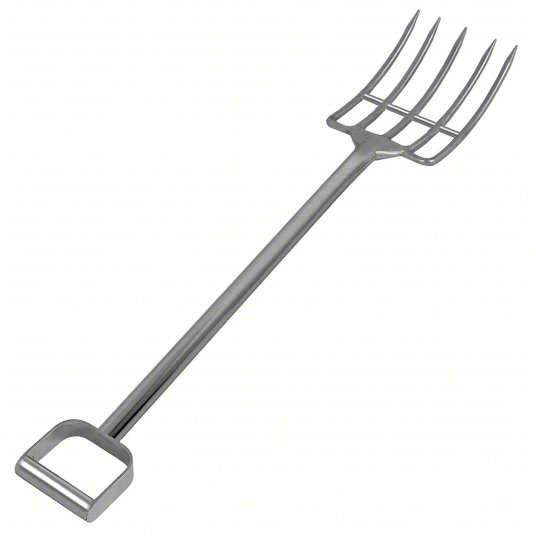
- A Berkey Water Filter – A Berkey water filter is a reliable and efficient tool for ensuring clean drinking water. It gets rid of chemicals and impurities, which makes it a great choice for living off the grid.
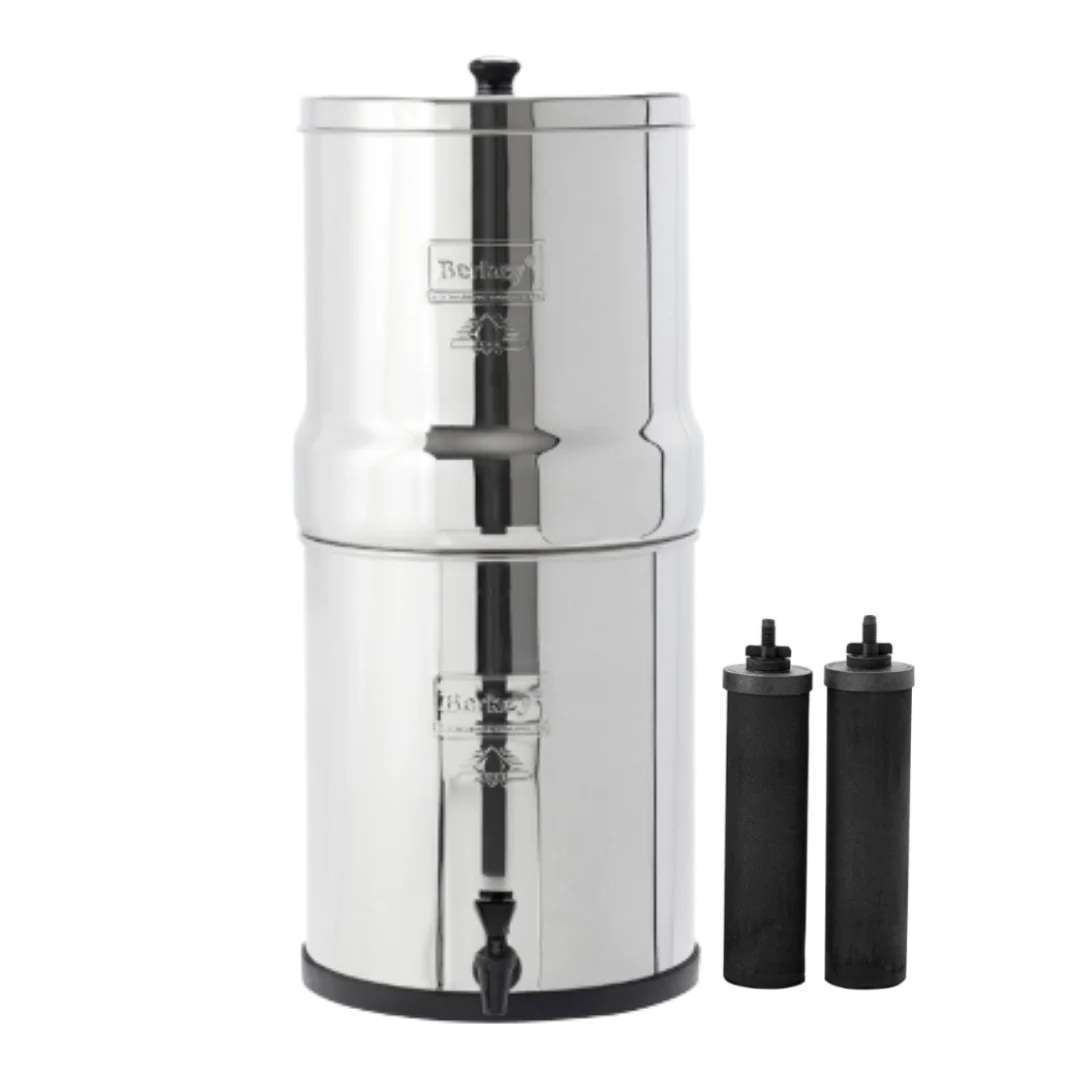
- A Washing Plunger – When it comes to doing laundry off-grid, a washing plunger is a reliable and long-lasting tool. Paired with a scrub board and a bucket or wash tub, it provides a superior alternative to machine washing, minimizing water wastage and ensuring clean clothes.
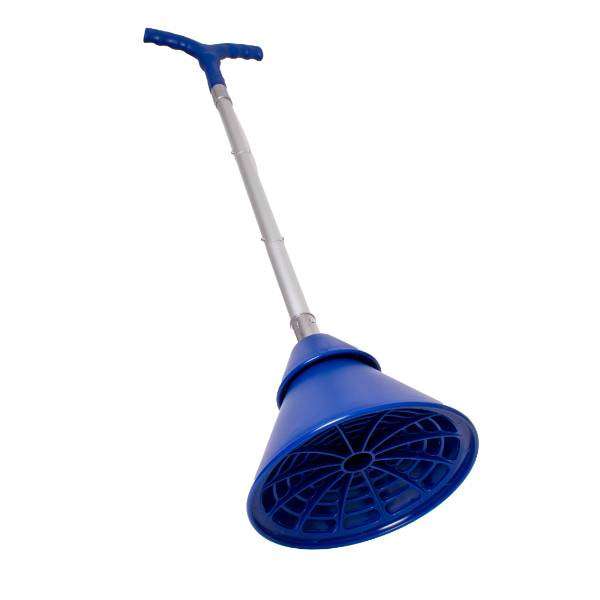
- Cast Iron Cookware – There is a reason why cast iron cooking has been around for so long. It’s great for cooking when you’re not connected to the power grid because it’s durable and keeps heat in. Cast iron pots, pans, and baking sheets can be used for all kinds of food and will last for generations.

- A Clothesline – Skip the gas-powered clothes dryer and opt for a simple clothesline. It dries your laundry just as quickly and without wasting any fuel. While weather conditions can sometimes be a challenge, having a wood stove can help manage the drying process.
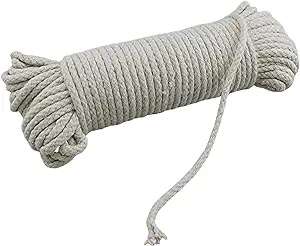
- Wool Socks – When it comes to keeping your feet warm and dry in cold weather, wool socks are a must. They provide insulation even when wet, making them ideal for outdoor work. Look for high-quality wool socks that offer both comfort and durability.

- A Wood Cook Stove – A wood cook stove is the heart of the off-grid kitchen. It provides both heat and a cooking surface, allowing you to prepare meals and bake with ease. Look for a high-quality wood cook stove that suits your specific needs and cooking preferences.
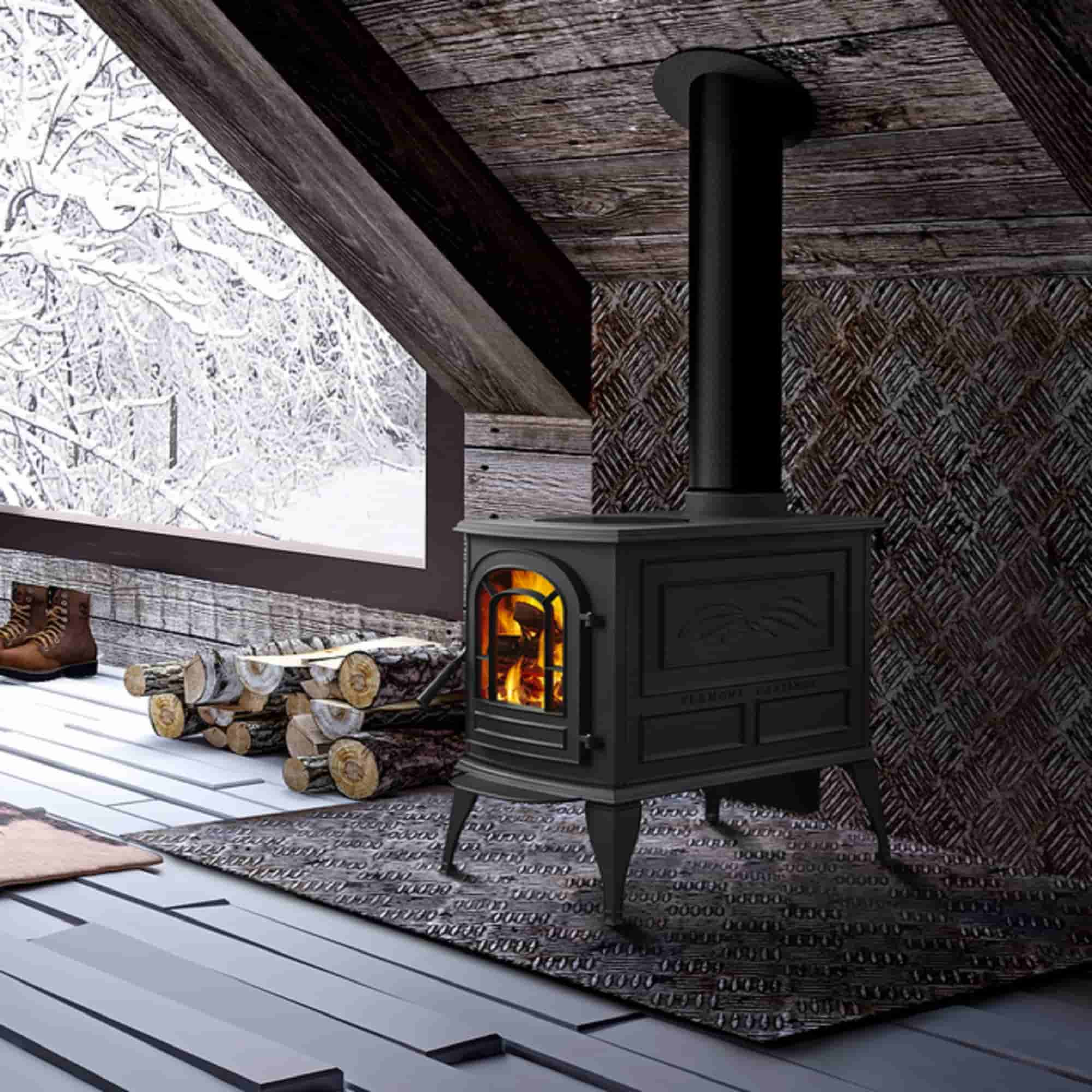
- A Two-Wheeled Wheelbarrow – A two-wheeled wheelbarrow offers stability and ease of use for daily off-grid activities. Whether you’re hauling materials or tending to your garden, a two-wheeled wheelbarrow can navigate sloped or rocky terrain with ease.
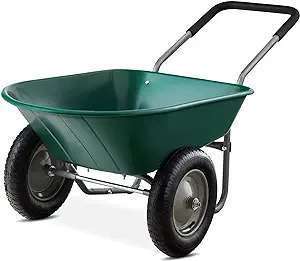
- Mason Jars – Mason jars are incredibly versatile and useful for off-grid living. They can be used for canning, organizing seeds, fermenting vegetables, storing herbs, and much more. Invest in a variety of sizes to cover all your storage needs.
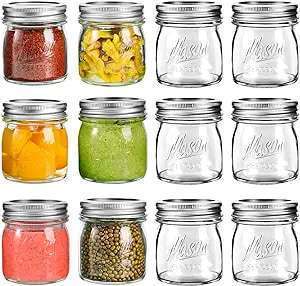
- Stainless Steel Bowls – Stainless steel bowls are a must-have for any off-grid kitchen. They are durable, easy to clean, and suitable for a wide range of tasks. From mixing dough to taking a water-efficient bath, stainless steel bowls are a versatile tool for daily use.

- Gamma Seal Lids – Gamma Seal Lids will level up your food storage game. They allow you to turn a five-gallon bucket into an airtight container that is also waterproof so you can keep all your bulk grains and other food safe. Making sure that the buckets are stored properly is key but if done right these lids will save your off-grid food storage space.
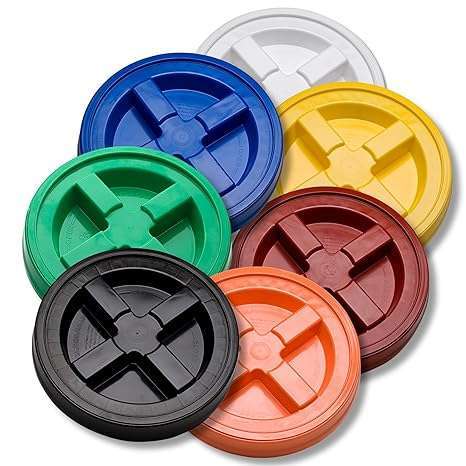
- Vegetable Cleavers – A vegetable cleaver is a versatile knife that can handle a variety of tasks in the kitchen. From chopping and slicing to mincing garlic and ginger, a vegetable cleaver can replace many electric gadgets.

Going off the grid. Self-sufficiency and resourcefulness become your main tools. But that doesn’t mean you shouldn’t bring anything else with you. Invest in these tools to make sure you can live how you want to live without needing help from anyone else. San Angelo Bar, scythe, cast iron cookware, mason jars; some of the basic hand tools and kitchen tools are essential for everyday life when all else fails. Remember though it’s not about how many tools you have but rather what you can do with them. So go ahead and embrace this lifestyle, equip yourself properly, and start living a sustainable self-sufficient life that everybody should be used to by now.
Inside a Solar Off-Grid House
We suggest a video that actually helps to go inside a solar off-grid house.
Solar Savvy for Off-Grid Living: Tips and Tricks
Living off the grid seems to be growing in popularity these days as people look for ways to reduce their carbon footprint and gain independence from traditional energy sources. A solid solar power system is one of the most important things you need to live off the grid, if not the most important thing. Today we will discuss the performance of one used by a couple living in North Idaho. We were fortunate enough to meet this couple just recently, they have been living off the grid for two years now and have gone through multiple iterations of their power system. We will explore how their current setup has performed so far, this includes but is not limited to insulation, snow clearance, and generator usage. One aspect that makes this couple’s power system unique is that they decided to bury half of their shipping container. The purpose behind it was to take advantage of geothermal properties from the hillside which would help keep everything warm within. Insulation played a crucial role in ensuring that their batteries didn’t freeze during cold temperatures. They insulated all walls on the container except for the side against the hillside, this turned out to be a success as they didn’t encounter any issues with their batteries not charging even when it dropped down as low as -5 degrees Fahrenheit.
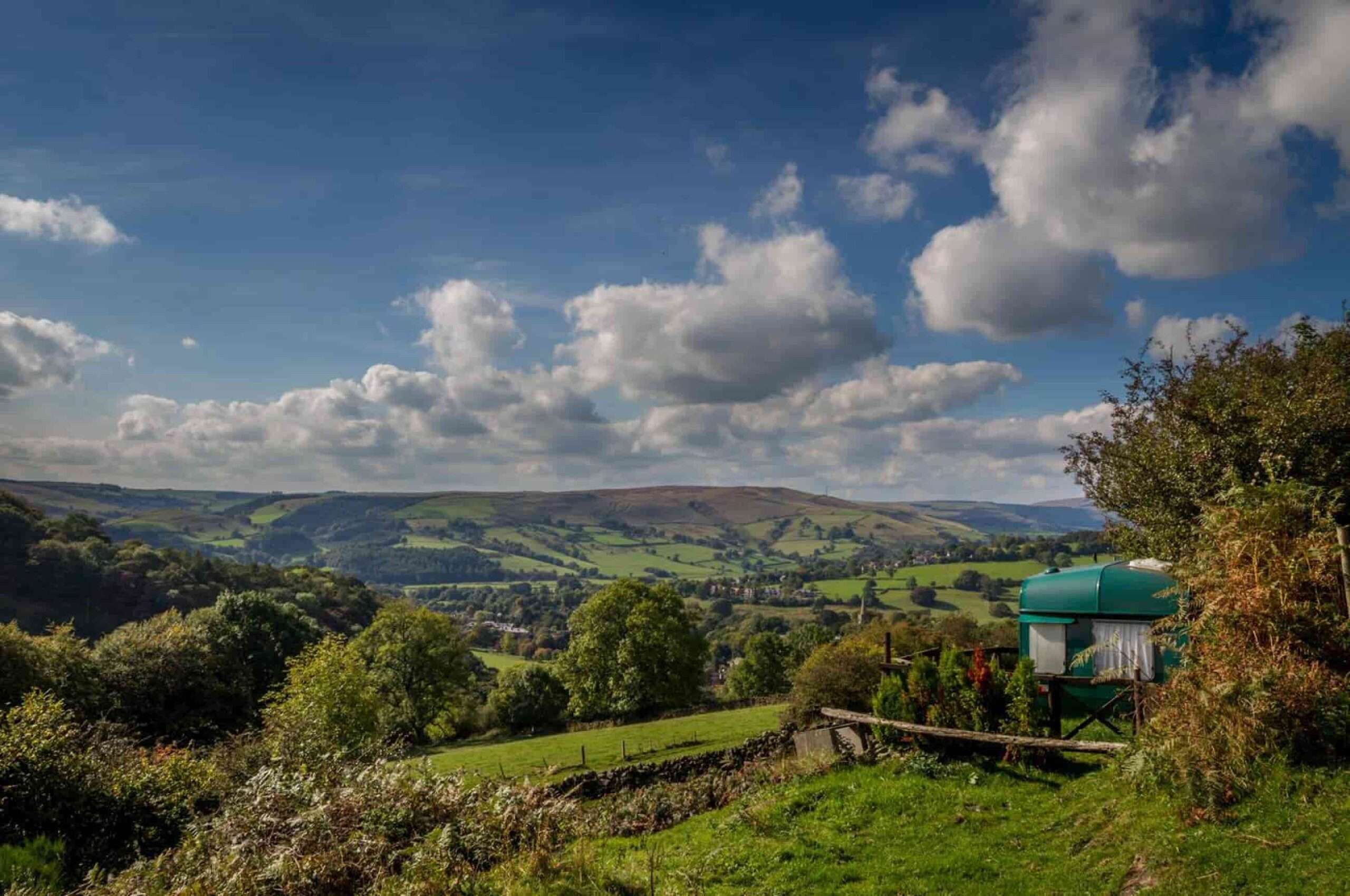
Another interesting facet of their power system is the tiltable solar array. By building the solar array on top of the shipping container, they were able to optimize its tilt angle for low Sun angles in winter, capturing as much sunlight as possible and generating more electricity. Even when partially covered in snow, sunlight would hit the backside of the panels thanks to their bifacial solar panels, and generate some electricity. The couple didn’t have to manually clear snow off their solar panels but faced different problems during heavy snowfall. Snow would pile up at the bottom of the panels, requiring manual shoveling for optimal performance. To supplement power needs during winter, they used a military surplus generator. Although not automated, it had an impressive 15-watt output which allowed them to charge batteries quickly. Manual starting and stopping were required depending on power requirements throughout the day. But despite that inconvenience, it was still a cost-effective and reliable solution for their winter power needs. Their off-grid home had similar power needs to a typical American household with appliances like water heaters, toilets, and refrigerators daily average power consumption was about 22 kilowatt hours or about 650 kilowatt hours per month not significantly lower than the average American home’s monthly consumption of about 900-kilowatt hours. The couple’s system was sized to keep pace with their power needs even in winter. Their solar panels capture just 9% of their capacity in December due to shorter daylight hours and cloud cover. So the generator ran 13 times that month. But its use declined markedly in November and February when it ran just four times during the latter month. In total, they ran it 28 times through the winter on consumption of 96 gallons of fuel which cost them about $450. But they still generated more electricity than the generator consumed.
Living off the grid on solar is not only sustainable but also money-saving, as this couple’s experience shows. Even in a Northern climate subject to harsh winters, a well-designed off-grid power system can handle modern life’s demands. Whether or not you live where it snows north of Boston, if you are considering going off-grid you owe it to yourself to see what is possible with the clean and reliable energy provided by today’s solar power systems for off-grid living.
Electricity for Off-Grid Living as A Practical Primer
Everyone is talking about solar power systems. We don’t want to be an average publisher. We will talk about whether can you use wind as electricity for off-grid living. We will discuss our experience with the Nemo 500 wind turbine. As experts in off-grid living, we have extensive knowledge of solar and hydro energy, but wind turbines were new territory for us. Living in a windy area, we were curious if wind energy could complement our existing solar system. When the opportunity arose to test the Nemo 500, we decided to give it a try. To ensure optimal performance, we closely followed the installation instructions provided with the Nemo 500. It is crucial to mount the turbine in a clear path of wind, away from any obstructions that may disrupt airflow. Our turbine is mounted on a six-meter pole, strategically placed near our house to minimize cable length. One concern we had was the noise level, as the turbine is located close to our bedroom. That being said, we were happily surprised by how quiet it is. The sound of the wind easily masks any noise generated by the turbine.

The Nemo 500 has a maximum power output of 500 watts. However, in our experience, the actual output fluctuates depending on the wind conditions. On average, we observe power generation ranging from 0 to 100 watts on moderately windy days. On extremely windy days, the turbine can reach higher power outputs, sometimes exceeding 200 watts. However, it is important to note that wind patterns can vary, and our location on the side of a mountain in a valley may contribute to the fluctuating performance. While the Nemo 500 adds some extra energy to our system, it is not sufficient to rely on as a standalone power source. We use batteries to store the energy generated by the turbine, reducing our reliance on the generator, which is much less efficient. Our primary goal with the wind turbine is to supplement our existing energy system, rather than replace it entirely. Because of how much the Nemo 500 costs, we think it’s a good deal. At the full price of 500 pounds, it might not be as appealing. We were able to buy it from a friend for 250 pounds, though, since they had never used it. Along with the additional costs for pole installation and cables, we are satisfied with the investment. In the future, we may explore different locations to find a spot with a clearer wind channel, potentially increasing the turbine’s efficiency.
To sum up, our experience with the Nemo 500 wind turbine has been good. While it may not generate significant amounts of energy, it serves as a valuable addition to our off-grid system. Despite initial concerns about noise, it operates quietly, and the sound of the wind masks any noise it does produce. We are content with the energy it provides and the money it saves us by reducing generator usage. If you are considering the Nemo 500 or wind turbines in general, we encourage you to share your experiences and insights.
Guide to the Best Battery for Off-grid Living
We will be comparing Lithium vs AGM Batteries for the best solar panels for off-grid. The battery you choose for your solar power system is essential in the world of off-grid living. There are two common batteries people go with sealed lead acid (SLA) batteries and lithium batteries, but what’s the difference? For starters, there are disparities between size, weight, usable capacity, and price that we’re going to explore. By comparing these aspects you’ll be able to make a more informed decision on how to get the best solar panels for off-grid.
Lithium batteries have a huge advantage when it comes to size over Sealed lead acid batteries. Even though both carry 12-volt 200 amp hour batteries, Size-wise lithiums are much smaller. Lead acid measures 20.5 inches by 9 inches by 9 inches while a lithium battery measures 11.5 inches by 10.5 inches by 8 inches. This allows the lithium to take up less space in your off-grid setup
There is a big difference in weight between lithium and lead acid batteries. Lifting a 200 amp-hour lithium battery weighs much less than lifting its equivalent sealed lead acid battery; lifting them may even weigh two to three times heavier. Therefore, lithium batteries offer significant weight reduction benefits when used for off-grid systems.
Another key consideration in battery selection is usable capacity. Sealed lead acid batteries have an inherent limit called “depth of discharge.” Discharging them beyond 50 percent puts them at risk of permanent damage; lithium iron phosphate batteries (such as those sold by Tenergy ) however can safely cycled down to 80-90 percent without suffering adverse side effects, thus providing fully usable 200 amp hour lithium power storage, while their counterpart sealed lead acid batteries could only deliver 100 amp hours at best.
When picking batteries, price is often the biggest worry. You would think the cheaper one is the obvious choice. At first glance, it seems like that’s true for sealed lead-acid batteries over lithium ones. A 200Ah sealed lead acid battery costs around $400 while a 200Ah lithium battery can run you almost $1000. However, if we’re talking about lifespan then these numbers start to change.
If taken care of really well, a sealed lead acid battery will last around 3-5 years. On the other hand, a lithium battery (especially lithium iron phosphate) can last anywhere from 10-20 years. The initial cost of a lithium battery might be higher but it’ll end up costing less in the long run because they’re built to last.
By the time you’d need to replace your sealed lead acid two or even three times, your lithium would still be going strong.
While lithium batteries have a lot of strong points, situations exist where sealed lead acid batteries, specifically AGM batteries, would be more appropriate. If you want to save a lot of money, AGM batteries might be a better choice for you. They require less money upfront and have been successfully used in off-grid systems for multiple years. On top of that, they perform better in colder areas than lithium batteries do. In the case that you live somewhere with low temperatures and don’t have insulation for your batteries, AGM or sealed lead acid batteries can withstand those conditions much better than lithium ones.
Selecting reliable solar panels and batteries for off-grid living is crucial to ensure reliable power supplies. While sealed lead acid batteries have long been considered the top choice, lithium batteries have increasingly gained favor for their smaller size, lighter weight, greater usable capacity, longer lifespan, and cost-effectiveness compared to their lead-acid counterparts. When making decisions it’s important to consider your specific needs, budget constraints, and environmental conditions as well as any information needs you might have before making your selection – feel free to reach out should any queries arise. If any inquiries about off-grid living or batteries feel free to reach out or get in touch if any details are required.
Making the Switch with Living Off Solar Power
Bringing energy to an off-grid cabin isn’t as easy as installing a couple of solar panels. For this particular build, we installed a 48-volt electrical system with over 10kw of solar panels, allowing us to harvest the sun’s power. We also installed 28kwh of battery storage to ensure that we never run out of power. Before connecting the batteries, it was important that they were charged to the correct voltage. The generator is wired through a junction box and powers up from there. Although this device doesn’t have any power source, we use it to assess all 24 lithium batteries. This ensures our batteries are fully juiced up before providing off-grid power. There may be many steps involved in bringing energy to an off-grid cabin rewiring the cabin, installing solar array mounts and modules, and framing a battery house, some of them but in the end, they’re all worth it for freedom.

With most components resting against the wall in the battery house, you can make custom cables that go between all four devices. Cut the cable to size, attach a lug, and then heat shrink over the connection. After each component was mounted, the system started to look more complete. Throughout the installation, you may run into different challenges. One of the largest is that there is a voltage discrepancy between what Victron says and what my multimeter reads. The solar panel company sponsoring our electrical system should help us troubleshoot and resolve this issue quickly. At other times, like today, one battery in your bank could die, rendering an entire bank of batteries unusable. We’ll move forward with five banks instead of six as planned. After days of charging batteries and troubleshooting errors, we finally arrived at the truth: Electric power can be run to Brandon’s cabin with his setup.
Providing power to an off-grid cabin is no small feat. It takes hard work, patience, and a lot of thinking outside the box. But once everything is set up, you’re good to go. From there on out, you can fully embrace the next chapter of your life and continue to grow roots in this unique area that has no connection to modern society.
Solar Kits for off-grid Living are essentials
Livin’ off the grid is a trip, but so is powering your home. You can’t just pop in an outlet and connect it to the city’s electricity. That’s where solar kits come into play. They supply you with a reliable and sustainable way to ensure your electronics stay on while keeping your costs down. The price for the whole thing may shock you at first, but as they say, “You get what you pay for.” Although it’s a steep initial cost, think of all you’ll save over time no more electric bills or worrying about blackouts. With solar power comes independence; unfortunately, I’m not talking about it from family or friends.
The next best thing about these kits is how user-friendly they are. It’s simple and quick to set up, even if you haven’t done it before. If you’re like me and hate asking people for help, then this will be music to your ears. Everything that you need comes included with the kit. There’s no need to hire someone to install it since everything has its place and goes together like legos.
In each kit, you’ll find solar panels, batteries, a power hub, and an intelligent distribution panel. Connecting them is as easy as pie, too. Just use the MC4 connectors, which are standard across all products of this nature. The whole setup also works great in cold weather, thanks to lithium-iron phosphate batteries. And if space is tight, don’t worry because they can stack on top of each other for compact storage.
The upfront cost of these kits may be enough to scare anyone away from purchasing one. But if you really break it down, there are countless long-term benefits that will far outweigh the initial investment. A couple being self-production of power, reduced reliance on the grid by blockin’ out the haters, and goin’ off-grid completely.
Best solar panels for off-grid living
We will break this important part into 3 different solar panel battery systems.The best solar panels for living off the grid are those that use batteries in the best way.
When it comes to your solar system, whether that be 12 volts, 24 volts, or 48 volts, there are two key factors you should consider: efficiency and cost. But here’s something you probably have yet to think of when choosing the voltage for your solar system. For those interested in RV systems specifically, stay tuned for recommendations tailored to RV setups, as they have their own requirements. In real life, let’s look at this. A client had a 2,000 W inverter connected to a 12V system. He initially planned on keeping this 12V inverter, but after receiving advice, he switched to a 24V system. The switch brought him multiple advantages, such as reduced wire cost, increased system efficiency, and reduced cost of the charge controller. Ultimately, it is recommended to pair inverter sizes with the appropriate battery voltage to achieve optimal performance. Here are some recommendations,
- For 12V systems, consider inverters up to 1,000 Watts.
- For 24V systems, go up to 2,000 Watts.
- For 48V systems, you can consider inverters up to 5,000 Watts.
The amount of power that each transformer takes in tells us what its limits are. If we’re able to keep it below 100 amps, there are a lot of benefits. Wire cost is one of the critical expenses for your solar system. When you’re shopping around, you might see a 12V 3,000W inverter available on the market, but it’s not always advisable to make that purchase, and this is why: A 12V 3,000W inverter pulls about 250 amps and requires a two-ought gauge copper welding wire that costs $114. On the other hand, if you have a 48V system with the same inverter, you’ll only need a six-gauge wire costing $36 — which will save you nearly three times as much money. The charge controller cost also varies with your system voltage. Higher voltage systems save you money on charge controllers. For example, with just 1,000W of solar power, a 12V system requires a 70 amp charge controller that costs about $382 — while a Charge Controller for A 48 Battery System would only require a 20 amp charge controller that costs about $90. So, opting for higher voltage can lead to more efficient conversions from energy. Systems like MPPTs and inverters are more efficient at higher voltages because they don’t have to work as hard to boost or drop the voltage from/ to twelve volts. For example, A twelve-volt inverter has an absolute maximum efficiency level of ninety-three percent; meanwhile, A forty-eight-volt inverter has an efficiency rating reaching as high as ninety-six percent. Although there are many advantages to higher voltage systems, it’s important to consider potential downfalls: Voltage sag could be seen when drawing too much current from too small batteries, which causes the voltage to drop. Lower current is drawn by higher voltage systems, resulting in less sag. Another thing worth noting is safety; higher voltages, especially 48V systems, have a higher risk of electric shock. It is generally recommended that for RV solar systems, you use inverters up to fifteen hundred watts for a twelve-volt setup, which will give enough power for typical RV applications, and twenty-four-volt setups can support up to three thousand watts for slightly larger inverter requirements. In most cases, it’s not recommended to use forty-eight-volt systems on RVs because there’s such limited availability of DC to DC converters for charging from standard alternators.
As we conclude, it’s essential to weigh the pros and cons of different voltage options for your solar system, considering factors such as efficiency, cost, and specific requirements for your setup. We value your ideas and questions, so please do not hesitate to share them with us.
Cost to go off-grid solar
Living off-grid is a dream for many, but what exactly does it cost to make that dream a reality? Explore the various costs associated with going off-grid and provide insights into the different options available to those looking to live a self-sufficient lifestyle.
Before we dive off the deep end, let’s make sure you’re even familiar with the concept of living off-grid. It means different things to different people. For some, it can mean just disconnecting from the power grid, while others take it to the extreme and cut contact with society altogether. Be honest with yourself: how independent do you really want to be? In other words, how would you live if you didn’t have any modern conveniences? Most people who go off-grid buy land in the country. Getting what you want is a big step toward taking charge of your life. Rural properties are known for having a lot of space and freedom, allowing this type of living to happen. However, the land cost is drastically different depending on where you’re looking and the quality you want, so keep an eye out for that. Shelter is another critical factor when thinking about going off-grid. But don’t worry, there are many options. From temporary solutions like fifth wheels (which is basically a place to sleep in your car) all the way up to permanent builds like earthbag homes (which are quite literally a house made out of dirtbags). What you choose depends on comfort levels and price points, but know that there are ways around high costs, such as building your own shelter. We don’t think about water because it’s always there. But when living off-grid, this will be one of our main concerns since we won’t have water companies providing us with our daily H2O. Well, drilling and rainwater harvesting are two options we have here, but they come at very different price points. Drilling a well can get pretty expensive, whereas collecting rainwater offers a more affordable alternative, but it also has cons (like being dependent on weather conditions). Being completely independent when it comes down to our energy consumption is also one of those goals we should strive for when living off-grid. Most people here choose solar power, but it costs a lot. The systems can cost a lot upfront, but they do provide long-term savings and energy efficiency.
When going off-grid solar, the total cost including land, homes, water, and energy systems can range around $45k. It looks like a lot of money. But it will make it easier to use green energy and live in a way that doesn’t harm the environment. For those without that amount of money in their pockets, there are other routes to take like volunteer opportunities, intentional communities, and collaborative projects. These alternatives won’t cost as much upfront but still provide the pathway to off-grid living.
We’ll also share some ways to cut down on costs and mistakes. Speaking from our own experience, building a yurt can be an exciting and affordable way to create a unique living space. In this article, we’ll go through the expenses from start to finish, as detailed in the video transcript. We’ll make it simple by breaking the numbers down for you so you’re not going into this blind financially. According to the transcript, the total cost of building a yurt came out to around $15,000, including $11,000 for the Pacific Yurts platform, $11k for the 20’ diameter yurt itself — $11k Extras like dome opener, windows, and insulation package The decision to use Pacific Yurts’ plans added another $1,100 to the cost. One strategy mentioned was using resources such as Craigslist and Habitat for Humanity ReStore to acquire materials at a lower cost. By getting creative with design choices and repurposing items, you might be able to save money in other areas, too. For example, if you source your flooring, cabinets, and countertop from Habitat for Humanity ReStore, it could save you hundreds or even thousands of dollars outfitting your yurt with furniture. This method will not only help you save money, but it will also make your home unique. Keep in mind, though, that winter heating is vital since there isn’t any insulation within the walls of a yurt. An antique wood stove purchased on Craigslist, along with a propane camping oven, should help keep things warm while also cooking meals efficiently. Options like adding a propane heater and improving insulation were mentioned as future enhancements that would make their yurt more comfortable and energy-efficient during colder months. When planning out your budget, don’t forget that there are also ongoing costs associated with maintaining a yurt, such as electricity, heating, and insulation upgrades mentioned in the transcript when speaking about factors they’re considering budgeting for in the future. So despite spending roughly $15,000 on the yurt itself, it’s estimated that a similar yurt could be built for between $15,000 and $20,000 — making it an affordable alternative to traditional housing.
You need to plan your life and think about the costs if you want to live off the grid. By understanding the different elements involved in off-grid living and exploring alternative options, individuals can find a path to a sustainable and self-sufficient lifestyle that aligns with their values and goals.
The Best Off-grid Communities in the World
We looked up for a certain period of time and asked many off-grid livers for their review. Our team only relies on user behavior. Here we find 6 communities that are the best off-grid communities as per our results,
- Leskidi Island, Vancouver – Leskidi Island, just off the coast of Vancouver is a weird place. It looks like it’s stuck in time, I’m talking thousands of years ago. Back then, a First Nations community called it home. Today, residents live on the island completely off the grid. To be as green as possible, live off the land as much as you can. But let me tell you something: being self-sufficient does not mean having all the comforts of home. About 400 people still live on Leskidi Island, even though it doesn’t have power or running water.
- Cabo Polonio, Uruguay – Cabo Polonio, situated within a national park on Uruguay’s coastline, is an idyllic off-grid community comprising 70 full-time residents. Established in 1753 and maintains its traditional lifestyle despite modernization efforts, with electricity supplied from solar panels and wind turbines only. Offering unique experiences to travelers looking for off-grid living experiences.
- Llancynfelyn Eco Village, Wales – Llancynfelyn Eco Village in Wales is known for its sustainable methods and alternative living. It aims to be 75% self-sustainable within five years of moving in. The property makes use of locally sourced materials, solar power, and hydroelectric power. Residents also focus on farming their own food which sets a high standard for off-grid communities.
- Organic Earth Homes and Lifestyles, Ghana – Ghana’s Organic Earth Homes and Lifestyles isn’t your typical neighborhood. It’s a company that joins people together to construct sustainable, off-grid homes. They have an ambitious goal: provide eco-friendly housing options using bamboo and rammed earth technology. With this method, they hope to make the world a better place by reducing carbon footprints and helping people connect with nature through off-grid living.
- Tinker’s Bubble, England – Tinker’s Bubble in Somerset, England, is a remarkable off-grid community dedicated to sustainable living. Established by a group of friends in 1994, Tinker’s Bubble has persevered through numerous challenges to become a flourishing intentional community. Boasting no fossil fuel use or fossil-based products as staples of daily life for residents who embrace an eco-friendly way of life that emphasizes low environmental impact living.
- Greater World Earthship Community, New Mexico – Situated in Taos, New Mexico, the Greater World Earthship Community is the most sizable off-grid community in America. The founder of this bad boy, Mike Reynolds — an architect — really outdid himself with this self-sustainability model. Not only do these things collect water from their roofs, but they also maintain a comfy internal climate without electricity, generate power from solar panels and wind turbines, and are just all-around cool properties to live in. If you’re looking for sustainability and autonomy then you should probably look into living here. Live it up like a member of the Greater World Earthship Community.
Bonus topic: we will share a woman living off-grid on a Remote Island so that you also understand it is possible to live off-grid without a community. Let the fun begin; living off-grid on a remote island in Northern British Columbia may seem like a dream to many, but for Amanda, it’s a reality she embraces wholeheartedly. As the caretaker of a property on a secluded island, Amanda’s days are filled with solitude, nature, and the simple joys of self-sufficiency. The isolation and tranquility of living on the island are what drew Amanda to this lifestyle in the first place. With only the sounds of the wind, wildlife, and ocean waves to keep her company, Amanda finds solace in the calm and quiet surroundings.
Amanda finds great joy in living harmoniously with nature on an island she calls home full-time, from bears and cougars to deer and humpback whales; the island is filled with wildlife that serves as a constant reminder of its power and beauty. Amanda works full time as the caretaker for this property; daily duties involve physical labor, maintenance tasks, and remote work such as checking docks and property as well as splitting wood for heating needs and tending the greenhouse; her duties are various yet essential to keeping things running smoothly on this property.
In addition to her caretaking duties, Amanda is also a freelance web designer, allowing her to work remotely and maintain a connection to the outside world. Balancing her work with the demands of island living, Amanda finds a sense of fulfillment in both her professional and personal pursuits.
Amanda’s time off-grid has taught her about self-sufficiency and sustainability. In the summer, she got power from solar panels installed by the property owners; in the winter, generators running on diesel provide heat and electricity. By collecting firewood from the ocean and managing water usage and waste disposal, Amanda said she tries to live “in harmony with the natural environment.” Living on an island is a challenge, but it doesn’t slow down Amanda’s resourcefulness or adaptability when it comes to living sustainably.
While Amanda was initially drawn to living off-grid because she desired solitude and simplicity, after the passing of her beloved pup, she now finds herself at an impasse. Yet despite this loss, she remains hopeful about the future and looks forward to new adventures, whether on land or sea. As she recalls her time spent living off the grid on an island and the lessons learned along the way, her resilience and appreciation of nature can be seen through her storytelling; from living alone to self-discovery, her journey is a testament to accepting change while following your heart. With so much love from Planet and Power, we want to see her lifestyle closely we are sharing our sweet lady YouTube channel. Please subscribe and send her well wishes,
Building Your Off-Grid Dream Home
Many individuals today dream of living off-grid, far from urban life and its distractions. The concept of working with their hands, building their own cabin in the woods, and leading a simple independent existence appeals to millions. What, though, does it really take to start an off-grid farm from scratch?
Building an off-grid homestead requires passion and hard work, beginning with laying a strong foundation. Dave Whipland and Brooke began their homestead project 25 miles outside Fairbanks, Alaska by mixing all their concrete manually using a wheelbarrow as they created a base for their cabin.
Living in a secluded area meant they had to get creative and utilize what was on their land. In this case, they decided to use the aspen logs that were everywhere on their property and build a vertical log cabin. This saved them money and gave their cabin a cool look. By using aspen logs for the cabin, Dave had to learn how to build it as he went. The process included cutting, notching, and fitting the logs together with screws into a solid structure. He had to ensure he left enough room for the logs to shrink when dried out. But if there were gaps, Dave came prepared and would fill them with permalinks so that his cabin wouldn’t be drafty. Not much information was available on building vertical log cabins, but by relying on his own problem-solving skills, he managed just fine. It was hard work, but in the end, it paid off because he now has a unique living space that’s perfect for him and his lifestyle.
Utilize the resources on your property. When Dave and Brooke built their cabin, they cut down trees from their own land. The same was done when it came time to build a storage shed or even a shower house. They didn’t stop there, though; instead of buying new items, they used what they could find at the local dump, like a propane cook stove and stainless steel sink, to save money.
Living off the grid might be a challenge at times, but it’s one Dave and Brooke are willing to do. Their homestead shows that you don’t need much to live comfortably and happily. With time and determination, they built themselves homes using only essential tools and materials. But this project isn’t just about making buildings or being self-reliant; it’s about living with what you have. They use camp stoves to cook their food and rainwater for showers; the couple even created this model before they had kids. Taking the DIY approach taught them many valuable lessons, but most importantly it’s made them appreciate how hardworking they are and how much they can rely on themselves. And when you appreciate yourself more, life feels more fulfilling.
We share real-life experiences so that our readers can relate and make it possible. Special thanks and credit goes to the most lovely couple on earth Dave Whipland and his wife Brooke.
From Concept to Reality: Off-Grid Living Solutions in Action
Living off the grid is a concept that has intrigued many people, sparking curiosity and sometimes confusion. What does it mean to live off the grid these days? Let’s learn more about this thought and clear up some common misunderstandings.
Dictionary.com defines living “off the grid” as living without access to public utilities like electricity or water; however, this doesn’t equate to primitive living conditions – contrary to popular belief. Living off-grid doesn’t mean living like cave dwellers in remote cabins in the woods – modern off-grid living still features many conveniences of the 21st century, such as natural gas utilities, electricity services, and telephone services, and water can provide similar comfort levels and functionality without using public utilities at all. Let’s take a closer look at some of these alternatives,
- Natural Gas Alternative: Propane -Rather than depending on natural gas, those who live off the grid can use propane as a fuel source. Propane is beneficial when it comes to cooking and staying warm, since it’s efficient and clean, giving you a good alternative to standard gas utilities.
- Electricity Alternative: Solar Power – When it comes to making power in the absence of a grid, solar is a fan favorite. Harnessing that good old sunshine, off-grid homes can confidently provide their inhabitants with electricity without calling on the local power company. Also, if there’s a stretch of dim sky for extended periods of time, backup generators can act as a lifeboat.
- Telephone Services Alternative: Cell Phones – Cell phones are a must have for off-grid communication, and they offer an easy way to stay connected even in remote locations. Internet access is often given through cell service or satellite, this makes it easier to communicate with residents who are off the grid.
- Water Supply Alternative: Rainwater Collection There are two sustainable solutions for off-grid water supply, rainwater collection or drilling a private well. The amount of water that can be collected will depend on how large your roof is, and also what the rainfall is in your region. If you do choose to drill a private well it’s important to know that the well will need to be drilled at least 100 feet in order to avoid any harmful substances from entering the water supply.
Off-grid living offers many variations for people to explore their chosen path to living off-grid. No single approach fits all, whether that means living closer to nature or with all modern conveniences; each person should find what works for them individually – the beauty of off-grid living – being flexible enough and adaptable enough to their particular preferences and needs.
Living off-grid can be an exciting journey of exploration and experimentation. As technology improves and new solutions emerge, off-grid living provides endless possibilities. Break free from conventional norms while forging your own path toward more sustainable and self-sufficient lifestyle choices. No matter your reason for considering off-grid living, remember it is your choice and embrace its diversity to find an approach that best meets your needs. Keep exploring, keep innovating, and keep smiling as you embark on your off-grid adventure.
Top Solar Generator Picks for Off-Grid Living
We will share one of our well-wishers’ reviews on this matter just because if we don’t bring the real-life experience, then you can waste your money. So be with us. When it comes to powering an off-grid homestead, having a reliable generator is essential. The Zendir Super Bass V 4600 has been a game-changer for many off-grid enthusiasts, providing a consistent power source that can keep your entire homestead up and running for extended periods of time.
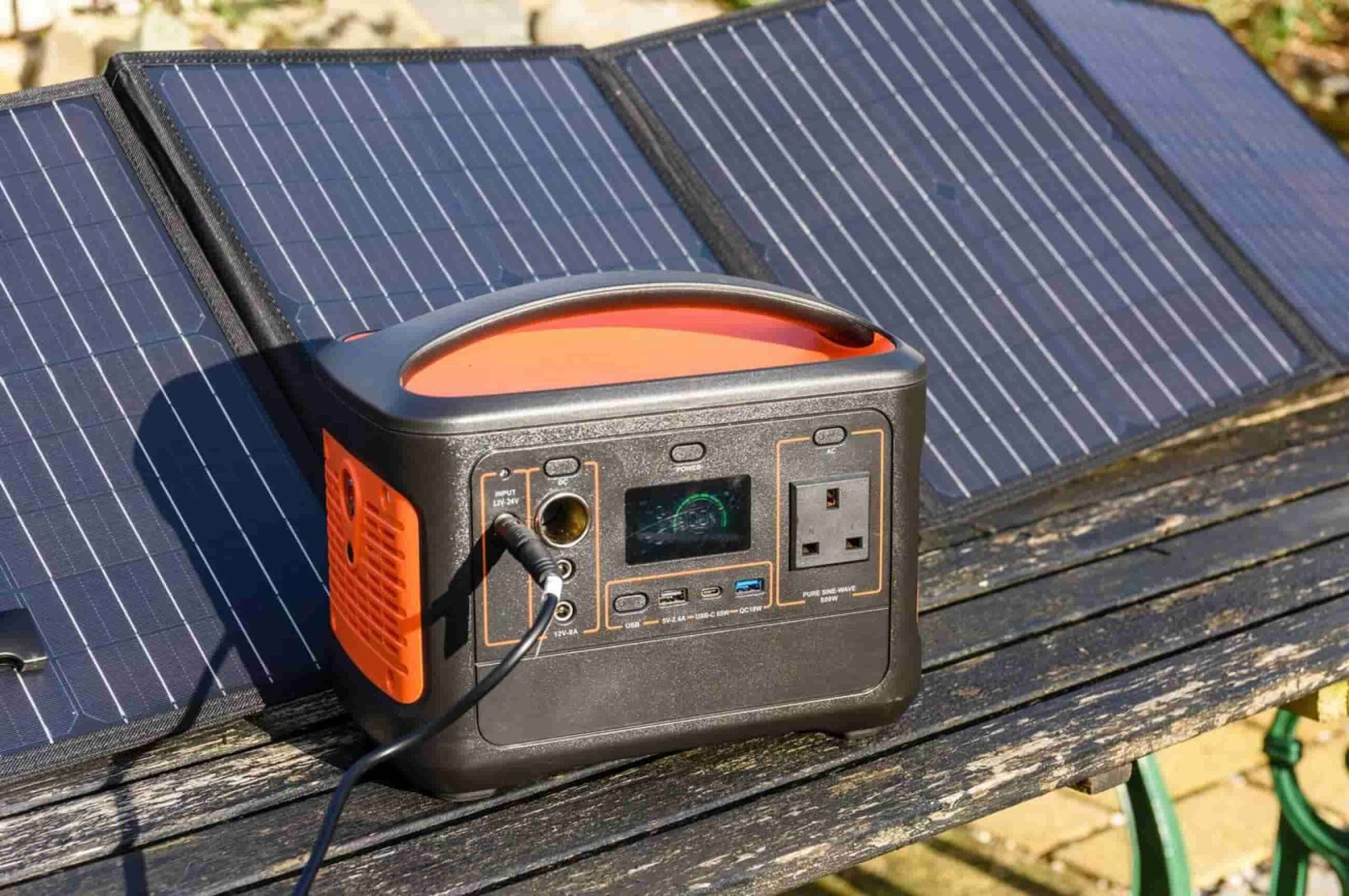
The Zendir Super Bass V 4600 is the Zack Morris of power stations. This station can connect a 1500-watt array to its generator and provide power even when the sun isn’t shining. The ability to keep your homestead powered day and night is worth its weight in gold. With a quick charge time and capacity to last through the night, you can be confident that you’ll never run out of power. Unlike other portable power stations, units like this one claim they can output full power all day long without any issues. With features like the AC button for powering appliances and being able to monitor the system via an app, this thing was designed for convenience and peace of mind. When you live off-grid, having a good generator should be just as important as having Wi-Fi at home. The Zendir Super Bass V 4600 doesn’t just meet today’s power needs; it has expandability with additional batteries, so your generator will grow with your future needs, too.
If you’re looking for the most versatile generator to power your off-grid life, then look no further than the Zendir Super Bass V 4600. It has unbeatable performance and crazy-fast charging times and can be upgraded as much as you want. You will never lose power again if you have the Zendir Super Bass V 4600 with you.
Off-Grid Motorhome Living Journeys
Living life on the road can be both thrilling and challenging, especially when finding the perfect travel trailer to suit your nomadic lifestyle. Today, we will take a detailed look at the Keystone Springdale Mini 1750RD, as shared by Catherine Gregory, a seasoned traveler who has recently transitioned to living in a travel trailer.
We’ll start our tour outside, where Catherine points out some of the standard features of the Keystone Springdale Mini 1750RD. The pass-through compartment provides plenty of storage space for a variety of items — including Catherine’s lithium batteries for off-grid living. She also highlights the importance of security with a heavy-duty hitch lock to have peace of mind while traveling.
On the other side, we have Catherine showing off her water tank connections. Staying hydrated on the road is absolutely crucial for any traveler, so she’s made sure to have water available at all times. There are also storage compartments in the back; they’re great for holding your outdoor gear or just any essentials that you don’t want taking up space inside of your vehicle. To ensure no one messes with her stuff, Catherine has replaced all of the compartment locks. This way, she can guarantee that only authorized personnel will ever be able to access them and mess around with her belongings.
Now, onto the good stuff — her solar system. Mounted on the roof of the trailer is a 420-watt solar panel paired with two Renogy lithium batteries. The well-equipped system is essential for off-grid living and self-sustainability. It’s important to Catherine that she can travel without any restraints. That includes power consumption, too. She’s installed a 2000-watt inverter that allows her to power almost anything as long as the sun shines. Don’t believe it? In one of her posts, she shows how she powers an air conditioner solely using solar energy. The commitment this woman has to eco-friendly living is truly unmatched.
Walking through the door and into the trailer, Catherine greets us in the open floor bedroom area of her home. She also mentions that she has a foam topper on top of her mattress. The storage space for this trailer is being utilized around the fresh water tank, showing us how Catherine uses every inch available to her.
Catherine upgraded her bathroom by upgrading the shower head and fan for an enhanced showering experience, adding storage baskets for essentials as well as a medicine cabinet for enhanced functionality of space. Catherine offers an overview of her kitchen space and storage solutions available, such as pantry cupboard and refrigerator storage solutions, while a two-burner stove and microwave serve to meet her cooking needs. One of the highlights of Catherine’s trailer is its rear dinette area with panoramic windows, creating an intimate yet picturesque dining and relaxation spot. Furthermore, Catherine has implemented innovative storage solutions like ottomans as extra seating and storage solutions, demonstrating her ability to organize her living space efficiently.
As we wrap up, we can’t help but admire Catherine’s dedication to the customization of her rig for off-grid living and maximizing storage. Her attention to detail and commitment to sustainable living shine through the upgrades and modifications she has made. We hope you enjoyed this in-depth walkthrough of the Keystone Springdale Mini 1750RD. Stay tuned for more adventures from Catherine as she continues her nomadic journey in style and comfort.
We highly recommend checking her website, Catherine Gregory
How much money do I need to live off-grid?
Is living off the grid worth it?
How do I start living off the grid with no money?
On the Go: Living Off Grid in Your RV
When you go RVing, you can live in the moment and do as you please. It’s a real sense of freedom. For some people, though, true freedom is camping wherever they want without needing to plug into anything or be on top of modern amenities. Whether it’s BLM land or in a parking spot, those who stay in their rigs off-grid don’t need access to electricity, water, or sewer hookups.
Being able to boondock or dry camp—camping wherever you want—requires some unique tools. Most people who live off the grid get their power from the sun. With flexible solar panels on the roof and a solar charge controller regulating how much energy goes into a lithium battery bank, these campers can live off the grid with self-sufficiency. Living off-grid also means being smart about resources. With limited fresh water capacity, living off-grid requires diligent water usage. Installing aerators on all faucets, using a composting toilet that uses zero water, and cooking one-pan meals to reduce dishwashing are just some of the strategies employed by owners of this van to conserve water.
Off-grid living can present unique challenges, yet many campers embrace this lifestyle for the opportunity to reconnect with nature and find solitude. Camping on public lands managed by the National Forest Service can offer free and beautiful settings for outdoor adventures while living off-grid can give an additional sense of freedom and independence – with careful energy conservation strategies providing modern comforts while being enveloped in natural beauty.
Living in an RV away from the power grid is a way of life that lets people escape the restrictions of normal living. By embracing self-sufficiency and conservation, off-grid campers can experience true freedom and live on their own terms.
Off-Grid Living Tips for Beginners
A lifestyle choice that brings a unique way of thinking about life: it’s deeply rooted in nature and self-sufficiency. If you’re new to this and want to make the switch to live off the grid, here are some important things you should remember.
Surviving off the grid is about unplugging from modern life and plugging back into Mother Earth. It’s physical, it’s hard, and most days, you won’t want to do it, but if you can learn to adapt and evolve with challenges thrown your way, it’ll be the most rewarding thing you’ll ever do. It’s not just one reason why people go off-grid. Some do it because they feel better when they have freedom. Others can’t stand being cooped up inside all day. Some just want a little more money in their pocket. The truth is, none of that matters because no matter what of those three reasons apply to a person when they live in total control of themselves and in perfect balance with the nature around them, they find a sense of energy and purpose that is completely lost on city dwellers.
Creating an action plan is important before making the big move to live off the grid. Four basic wants should be met by your plan: a place to live, food, water, and electricity. Finding an appropriate location, acquiring necessary tools and gear, and prioritizing key projects are all integral parts of an off-grid lifestyle. Beginning an off-grid journey requires gathering essential tools and gear that can support an independent lifestyle, from tents and sleeping bags to power sources like portable generators. Being prepared is key to living successfully in remote locations. Food storage, water containers, and bathrooms that break down organic matter are important parts of long-term off-grid life. When planning the construction of a cabin or tiny house, having an established plan in mind is vitally important – this includes considering power sources, heating/cooling options, water systems, and waste treatment systems as essential elements in creating an inviting and eco-friendly living environment off the grid.
Living off-grid doesn’t just mean retreating into isolation or returning to primitive ways of life; rather, it involves finding ways to thrive independently while remaining connected with nature. From breathing fresh air to enjoying homemade food and gazing upon stars in the night sky – off-grid living offers a unique and rewarding experience for those willing to embrace it. If embarking on such a journey requires courage, dedication, and authenticity, then by following these tips, beginners can set themselves up for an enriching and sustainable lifestyle deeply connected to nature.
Best States for Off-Grid Living, Choosing Freedom (With State Pictures)
In the previous, we discussed some best states for off-grid living across the world. Now we will only review the top 10 best states for off-grid living in the U.S.A. (continuing the first 10 states review). Let’s see what we got in our results,
- Alaska – Alaska is quite the place. It’s like a puzzle, there’s just too much to it. From its landscapes to its wilderness, there is never a dull moment. People actually like living off-grid here, can you believe that? It has everything one would need to live far away from civilization but still survive. Freshwater, fish, and game galore.

- Montana – There’s no place like Montana. its wide open spaces and small cities make it perfect for those living off-grid. The state has some of the best views you could ever imagine, with rivers and mountains all surrounding you, it can feel surreal sometimes. Anyone who visits will be able to see the wildlife up close, and the lakes have some of the freshest water in America. Montana is also home to a supportive community that encourages renewable energy systems. It’s gotta be one of the most relaxing places on earth, so much so that I might need to move there someday myself.

- Idaho – Idaho might be the best place to go if you are looking to make an off-grid lifestyle. It has low prices for land, and it actually has a good climate. The state offers some natural landmarks like forests or high deserts. It also has plenty of things that are great for outdoor activities. Idaho is also home to an already existing community that lives off-grid and because of this, they have rules in place to help those who want to follow in their footsteps.

- Colorado – Famous for the grandeur of its mountains and recreational activities, Colorado is the ideal state for living without needing anything from the grid. There’s so much sun that solar power is perfect for it. The state loves renewable energy and pushes hard for it, too, so almost nothing will make you feel bad about wasting energy because there won’t be a way to. Although we live in America where community is often absent, Colorado offers a strong sense of community and has abundant off-grid resources.
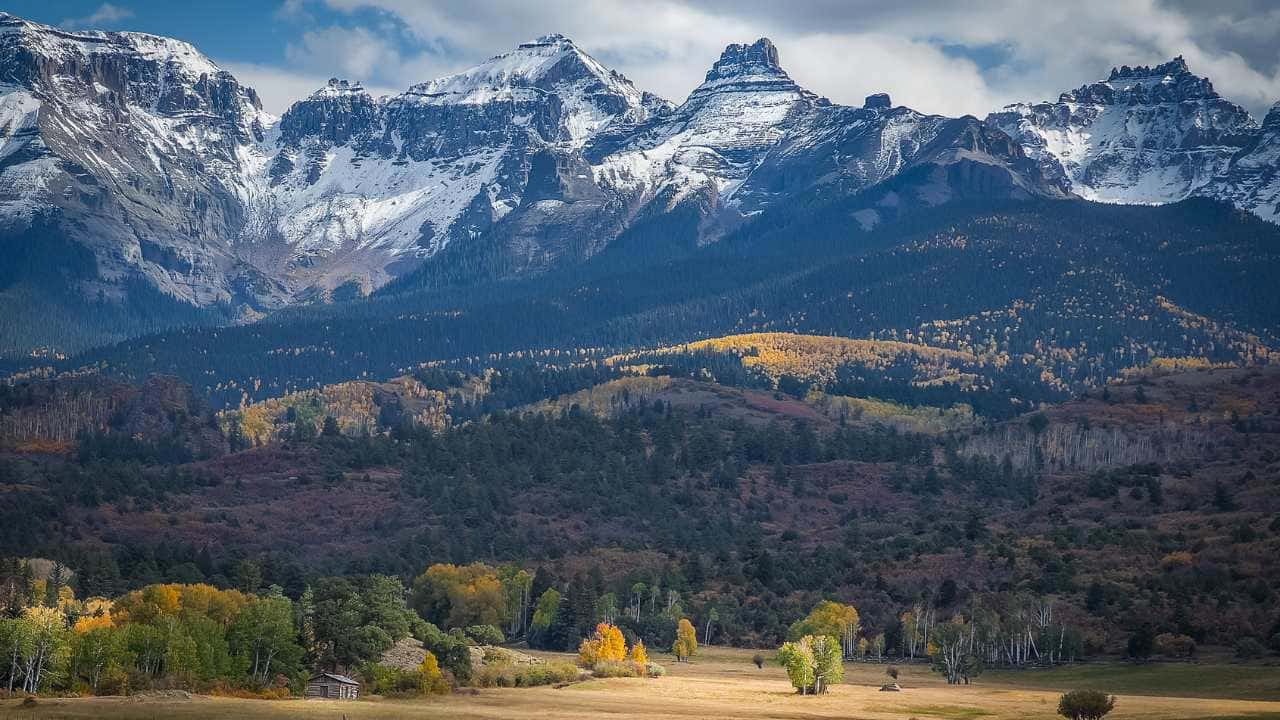
- Oregon – Lying in the state of Oregon is one of the most lush forests you could ever see. The land is so fertile and the climate so nice that it makes it really hard to pass up on. The state has a strong commitment to renewable energy and environmental conservation which fully aligns with off-grid living. And don’t worry, if you’re looking for collaboration or just need some help, their vibrant community is filled with people who want nothing more than to share what they know.

- New Mexico – The vast desert landscapes and abundant sunshine of New Mexico make it an ideal location for off-grid living. With its relatively low population density and affordable land prices, the state is an attractive option. The area’s rich cultural heritage also fosters a unique sense of community among off-grid residents.

- Vermont – Vermont is a great option for off-grid living. Their strong devotion to sustainability and self-sufficiency is ideal for someone looking to detach from society. The scenery in Vermont is beautiful, with hills that roll on endlessly and small, welcoming towns dotting the landscape. Lastly, if you’re into taking care of the environment, you’ll be happy to know that Vermont promotes renewable energy initiatives and offers supportive policies for off-grid residents.

- Texas – Texas is huge. I’m talking ginormous. So naturally, it’s gonna give you a big canvas to paint your off-grid picture on. It’s home to top-tier weather too making solar power generation a breeze. Another thing that makes Texas great for alternative energy systems is its relaxed regulations. But if you ask me, one of the best things about this place is the peeps. They’re all about independence and being self-reliant, which is why going off-grid thrives in Texas.
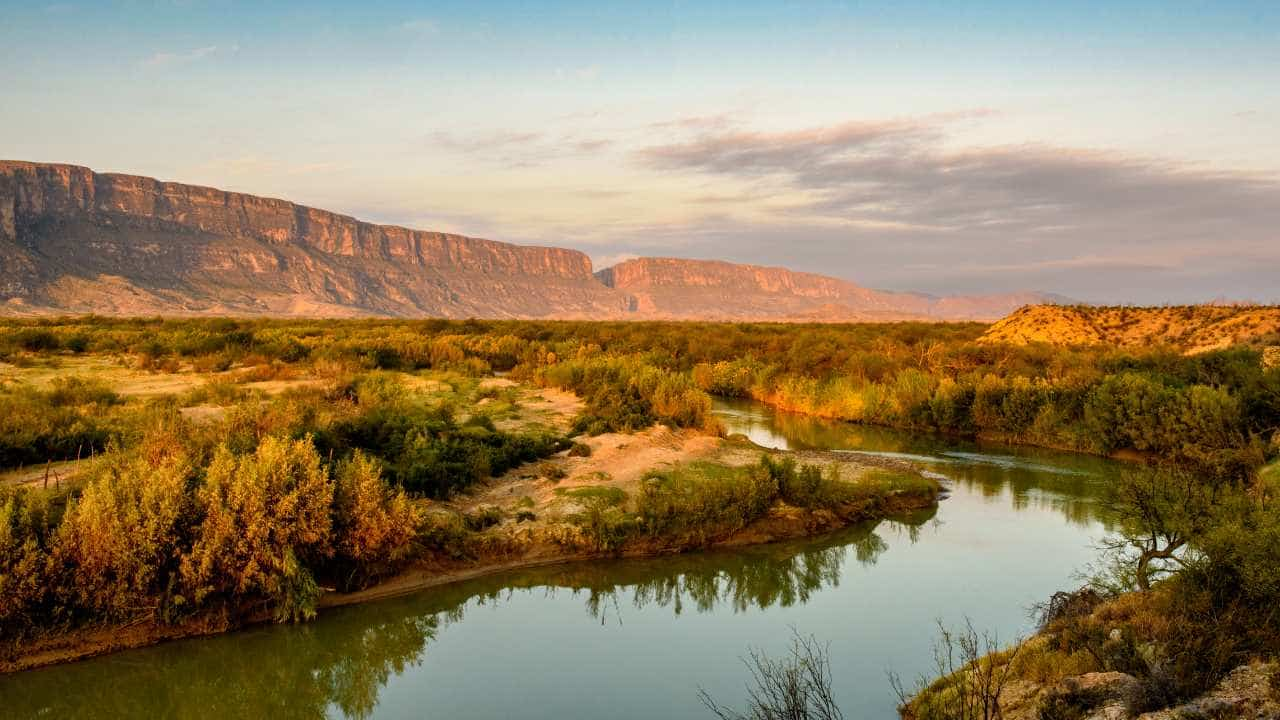
- Hawaii – Living off the grid in Hawaii is no small task. However, despite its challenges, there are many benefits. And few can debate how beautiful of a place this state is. They also have a pretty strong commitment to renewable energy. A lot of places struggle to keep their solar and wind powers consistent year-round. But thanks to Hawaii’s year-round tempered climate, they’re able to keep it consistent all the time.

- Maine – Living off the grid in Maine gets you up close and personal with its rugged coast, dense forests and rich freshwater resources. Being so far out from civilization one might think it’s a hassle to live there but that couldn’t be further from the truth. If you’re looking for a more sustainable lifestyle and alternative energy sources. Maine is where you want to be.

Before considering off-grid living, it’s essential to research and understand each state’s individual regulations, climate conditions and resources. While these ten states offer ideal environments for off-grid living, individual preferences and priorities may differ – ultimately making this choice is up to each person and these states provide a starting point.
Good luck on your off-grid journey. Let us know how you folks are enjoying it.
Is it legal to live off the grid in the United States?
You can live off the grid in any of the 50 states without getting arrested. That doesn’t mean it’s always legal, though. Some things you’ll want to know: In Mississippi, your system must be grid-tied, and disconnection is illegal. Laws for off-grid living vary by state and even more so in municipalities and counties. Urban areas typically have the most regulations on off-grid living, especially wealthy suburban neighborhoods with homeowners associations. Rural areas typically have fewer, if any at all.
The legal states in the U.S.A. are,
- Oklahoma
- Oregon
- South Carolina
- Texas
- Vermont
- West Virginia
- Wisconsin
- Wyoming
- Alaska
- Arkansas
- Delaware
- Hawaii
- Idaho
- Illinois
- Iowa
- Kentucky
- Maine
- Minnesota
- Missouri
- Montana
- Nebraska
- North Dakota
The Illegal states or not friendly for living off the grid are,
- Colorado
- Connecticut
- Maryland
- Massachusetts
- New Jersey
- New York
- Pennsylvania
- Rhode Island
- Utah
For further analysis source
Disadvantages of living off the grid in 2024
Living off-grid may seem like an idyllic dream for some, but its reality can often differ drastically. Consider these potential drawbacks before opting for an off-grid lifestyle. One major drawback of living off-grid can be unexpected challenges such as broken appliances and nonfunctional plumbing and heating systems requiring costly repair bills; such issues require significant knowledge acquisition to overcome successfully.
Living off-grid can often mean isolating yourself from the mainstream world and restricting your access to resources. Something as simple as doing laundry or cooking a meal can take up an extreme amount of time and effort. On top of that, many of the modern conveniences we use every day are nonexistent when living off-grid. You don’t have running water or electricity to make your life easier, so everything you do is twice as challenging.
Another downside to living off the grid is the reliance on weather and nature. Weather can affect just about anything. Imagine having so little in life, and then what you did have gets taken away by rain. It’s frustrating, to say the least. What makes it even worse is that natural resources are used for almost everything in this type of living, things like water and food. A big advantage, though, as I mentioned earlier, is that experienced people who have been doing this for a long time are willing to help out newbies like us. They know all too well what we’re going through, and they could provide valuable insight into problems we may encounter later down the road.
To be explicit, one big disadvantage of living off the grid is the possibility of being isolated. Because you’d live in a remote location, it’s going to feel like you’re far away from everyone else. In 2024, even with communication technology at its peak, the physical distance between you and others could create some problems, especially since you’re trying to find a balance between peace and quiet and socializing.
The price to pay in order to tantalize a lifestyle that is off the grid is no small thing. Owning your own plot of land, along with the installation cost for renewable energy systems (solar panels and wind turbines), water collection and purification systems, and waste management solutions, can turn out to be quite expensive. It’s 2024 now, and technology has become more efficient and slightly cheaper, but the initial setup cost still holds as a barrier for those who want to transition into an off-grid lifestyle.
When you live off the grid, you rely heavily on Mother Nature to get by. Need sunlight to come through for you today? We hope the clouds don’t block its spotlight. Counting on a gust of wind to keep things running? Crossing our fingers, those trees sway hard enough. And if you thought that was challenging, wait until drought strikes and water is scarce. By 2024, climate change might pile even more problems into this lifestyle and make finding natural resources harder than ever before. Gen Zers are built for this, right?
Off-grid living can present legal and regulatory hurdles. Zoning laws, building codes, water rights regulations, and renewable energy installations all present potential stumbling blocks to off-grid living arrangements. For example, disconnecting completely from the grid and collecting rainwater may even be illegal in some regions; although some areas have become more accommodating of off-grid lifestyles since 2024, legal issues still pose formidable hurdles and may limit what you can achieve off-grid.
Getting and keeping self-sufficiency is perhaps the most difficult part of living off the grid. Developing this skill is crucial for success, but don’t worry – with practice, it can be learned. Although in 2024, despite lots of technological advances that help us live easier lives, not having the daily responsibilities and self-reliance needed for urban living can be tough for a lot of people. By covering all these points we don’t think our readers should go for any further blogs to learn stuff.
Install a backup power supply with a small hydropower plant
If your solar generator isn’t working and you need backup power, the small hydropower plant might be a little reassuring. For thousands of years, humans have utilized water to simplify numerous physical activities. The most common way water is used is on huge industrial scales, resulting in centralized power generation from dams and reservoirs. Though when people discuss renewable power, they usually talk about technologies like large wind farms or huge solar arrays, there is another lesser-known form of hydropower – micro hydropower.
We are embedding content for this purpose to gain some handy knowledge about a small hydropower plant using a remote grid living person for many years.
And another one for a fun part, a man building wheel hydropower in a remote forest area,
Off-grid water system
We are going to cover natural sources, purification methods, storage solutions, and rainwater harvesting from proven and experienced methods and facts.
- Natural Sources – Wells are durable and reliable but need drilling and pumps. You might alternatively go for manual pumping or wind/solar-powered ones. Make sure to test water quality. Lakes, rivers, and streams are really common sources but the quality isn’t always great so make sure you’re not contaminating your crops. In the winter it might freeze over. Springs however have good quality but there’s a limit on how much you can take from them so build a system to collect all that water.
- Purification Methods – Water filtering is important. It removes debris and particles. You can use sediment filters, sand filters, and ceramic filters to get it done. Purifying water kills harmful bacteria and viruses. There are several ways you can accomplish this as well. UV light, boiling, and chemicals like chlorine will do the trick. If you want the purest water though, distillation via solar stills or non-electric devices will be necessary. Commercial filtration devices that work include Berkey brand filters.
- Storage Solutions – The barrels and tanks are made from food-grade plastic. They can store well, spring or rainwater. Calculate the amount of water you need. If you want gravity-fed systems, use elevated tanks to create water pressure. And if you’d like to prevent freezing, use underground tanks or root cellars. Just remember to always keep the water moving as well.
- Rainwater Harvesting – Gutters collect and funnel water to storage tanks or barrels while diverters prevent the first bit of water from being collected. Filters are needed for debris, but we rely on contamination levels to determine purification methods. You can also use passive filtration through sand and gravel beds. If none of that’s available, try sunlight, boiling, or chemicals to purify harvested rainwater.
You may need to know the septic tank installation cost
For living off the grid you must need to learn various skills to survive such as waste management. Thus, you need to add a septic tank, and you may need to know a septic tank installation cost.
If you’re going to add a septic tank, the main question that runs through a homeowner’s mind is, “How much?” And today, we’ll give you an answer to that. We will compare two of the most popular septic tanks and get their prices: the largest onion-style shape septic tank and the low-profile bullet-shaped septic tank.
Initially, we will examine the expenses associated with purchasing each type of tank.. A fiberglass onion septic tank will typically run you about $700, while a low-profile bullet septic tank can be as much as $900. On paper, it looks like the fiberglass one is the better buy just because of its price point. But hold on, we also have to consider the total cost of installation.
One important consideration for installation is the size of the hole necessary. An onion-shaped septic tank requires a larger hole than others do and, therefore, may require more laborious excavation work and additional digger costs for excavation. Furthermore, when installing an onion-shaped septic tank it often involves anchoring it to the ground before concreting it to ensure stability and security for its users; material and labor costs associated with anchoring and concreting can significantly add to total installation expenses. You may want to know how a septic tank works right? Let’s check it out also,
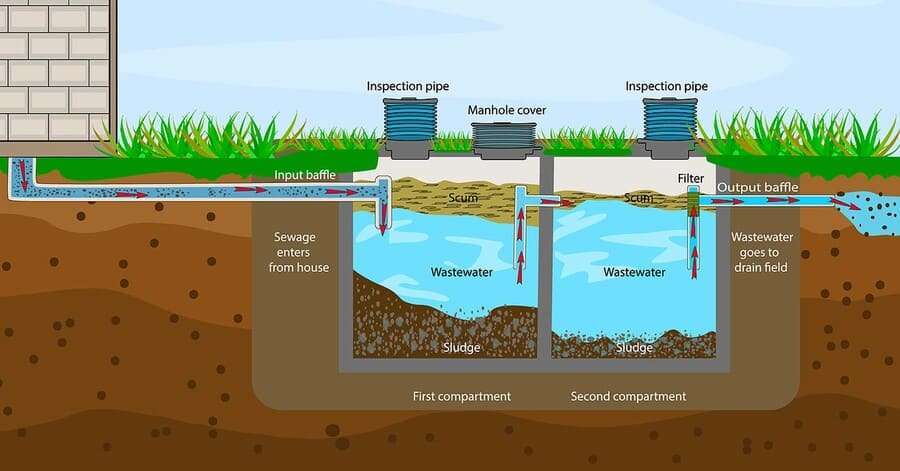
Septic tanks can be a peculiar invention, collecting solids and liquids for the sole reason to treat them. It’s not an ideal job, but it gets the job done. Wastewater fills up the primary compartment of the tank before flowing into the second one through an opening in a partition. Then, both compartments fill up until they reach a pipe where effluents flow from the tank to be disposed of in a field. Solids gather at the bottom of the main entrance compartment as wastewater comes in. Some solids also make their way into the exit compartment. Fats, oils, and greases begin to accumulate at the water’s surface, which is called scum. The baffle wall retains these solids within that primary compartment, stopping any solids from leaving the tank and finding their way into that disposal field. Now, after all that solid separation, you’d think we’re good, right? Well, nope, Gases will then generate above what remains of those liquids left in that compartment because it’s probably still trying to figure out how fluids even fit in there anymore. As these gases start filling that air space above its water level, they force themselves through this system and exit your home through various vents on your roof. Treated wastewater or effluent will exit your septic tank and flow to some distribution box, where it gives away its effluents for two more trenches before falling over a gravel bed inside each one. This weird process eventually enters pores inside our soil, forming a trench bottom where, over time, water levels become visible but stop at some point from thickening too much from biomass buildup, forming healthy micro and macrobiotic levels required for good quality water levels inside trenches.
You need to learn how to preserve food
Living off the land is more than just a trend; it’s a lifestyle that challenges individuals to rely on themselves for sustenance.
This is how you can try,
- By Canning
- Drying/Dehydration
- Smoking, Salting, and Drying
- Pickling and Fermentation
- Root Cellars and Cool Storage
- Sand Storage
- Cold Boxes and Chest Freezers on Off-Grid Power
- Zeer Pots
- Groundfridge
We are at the end of part
We tried to give a full overview about living off-the-grid lifestyle. With our own proper research, our team member’s reviews, or experiences we put all the pieces of stuff here. We truly believe in the world of business and misconception our efforts to make this writing for our respected readers will not go in vain.
Will see you guys in the next writing.

